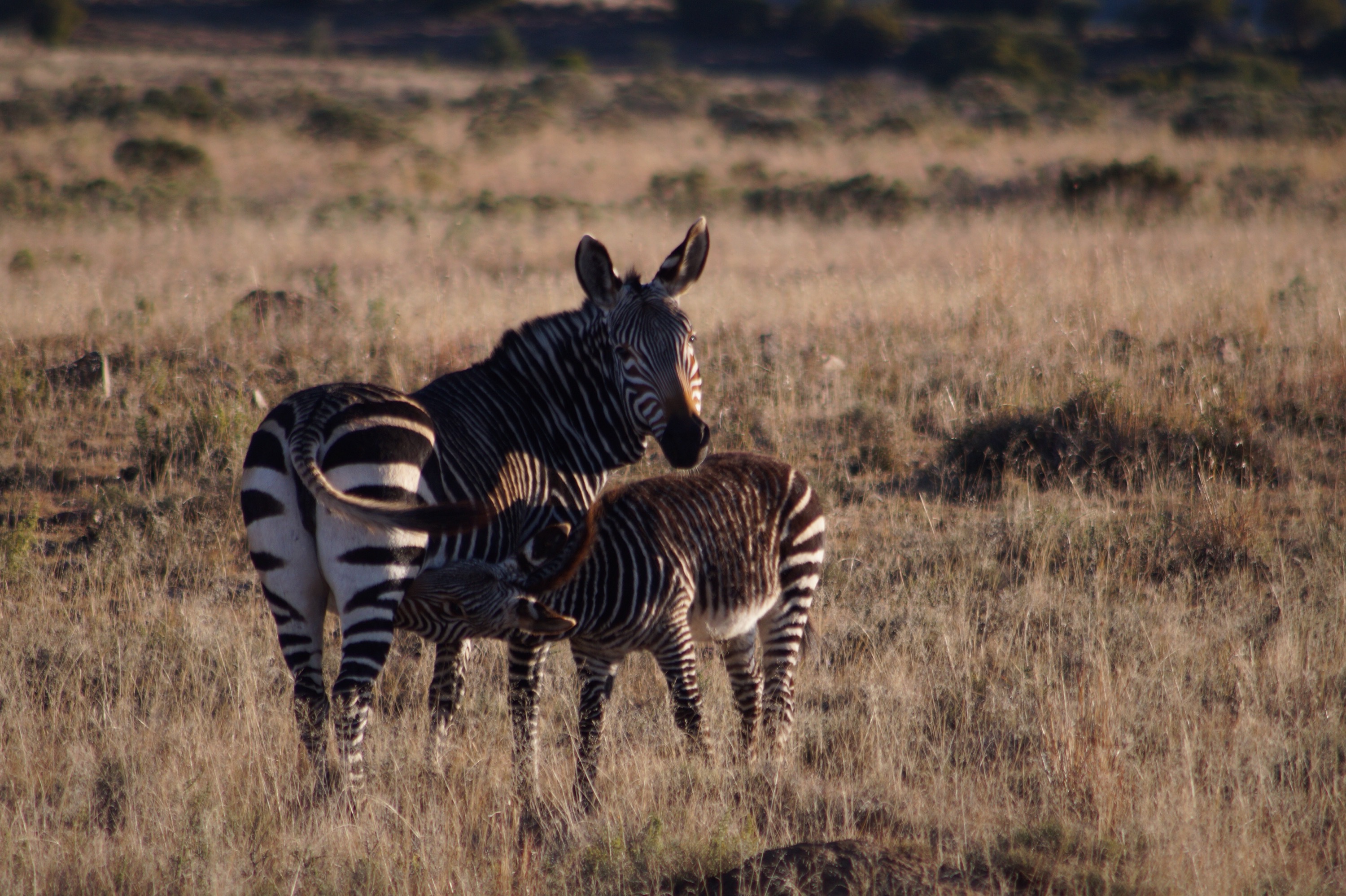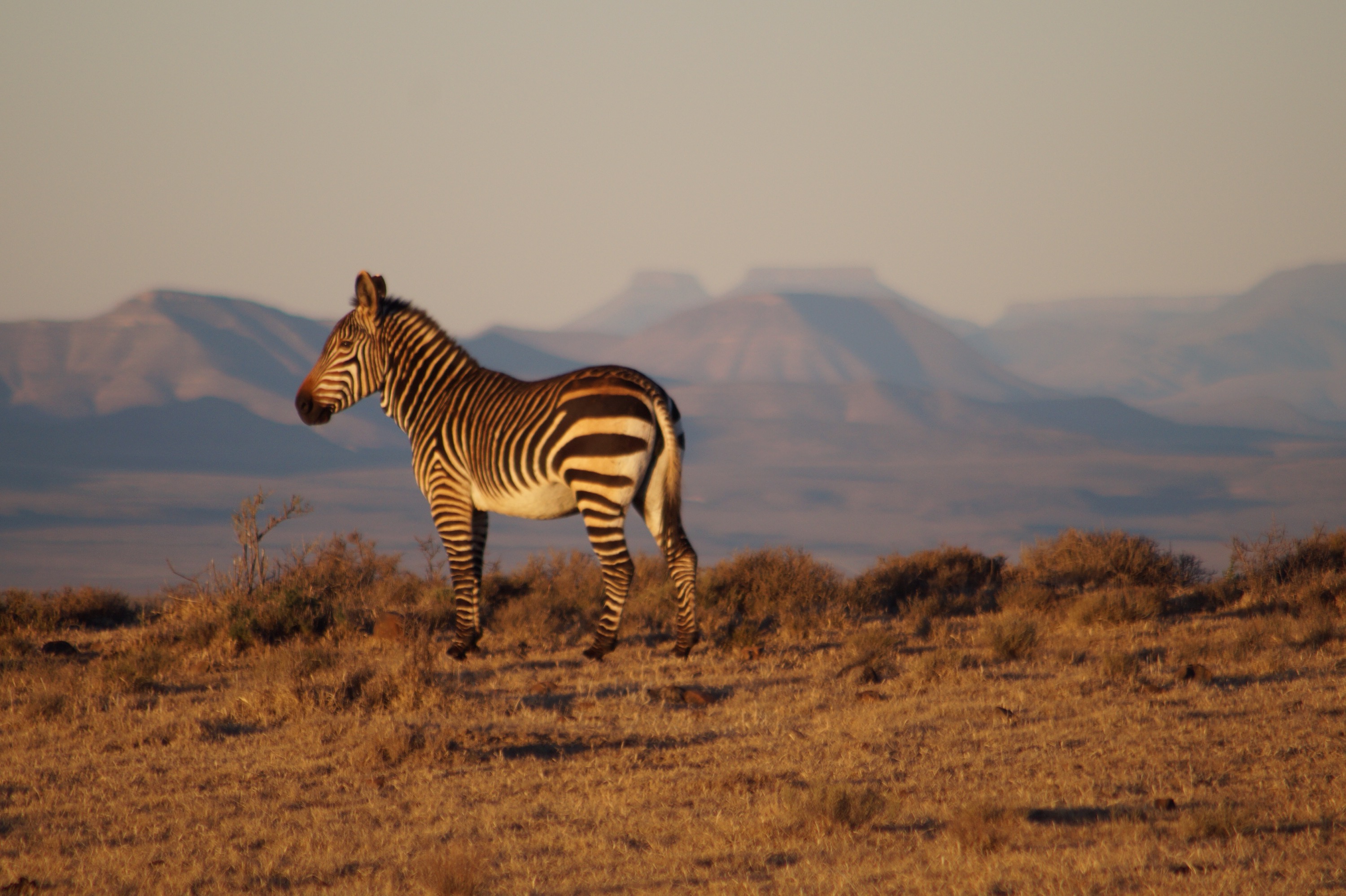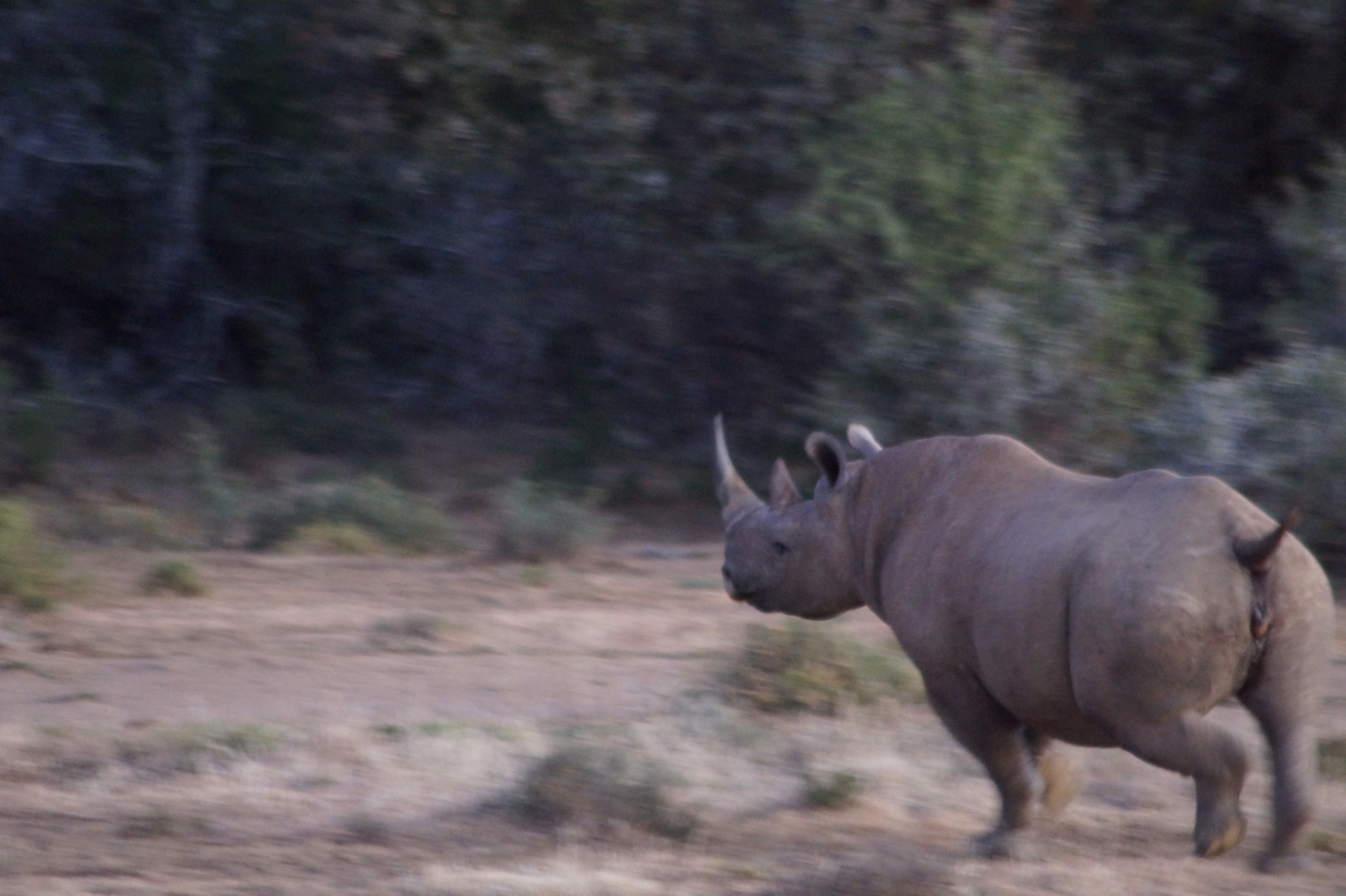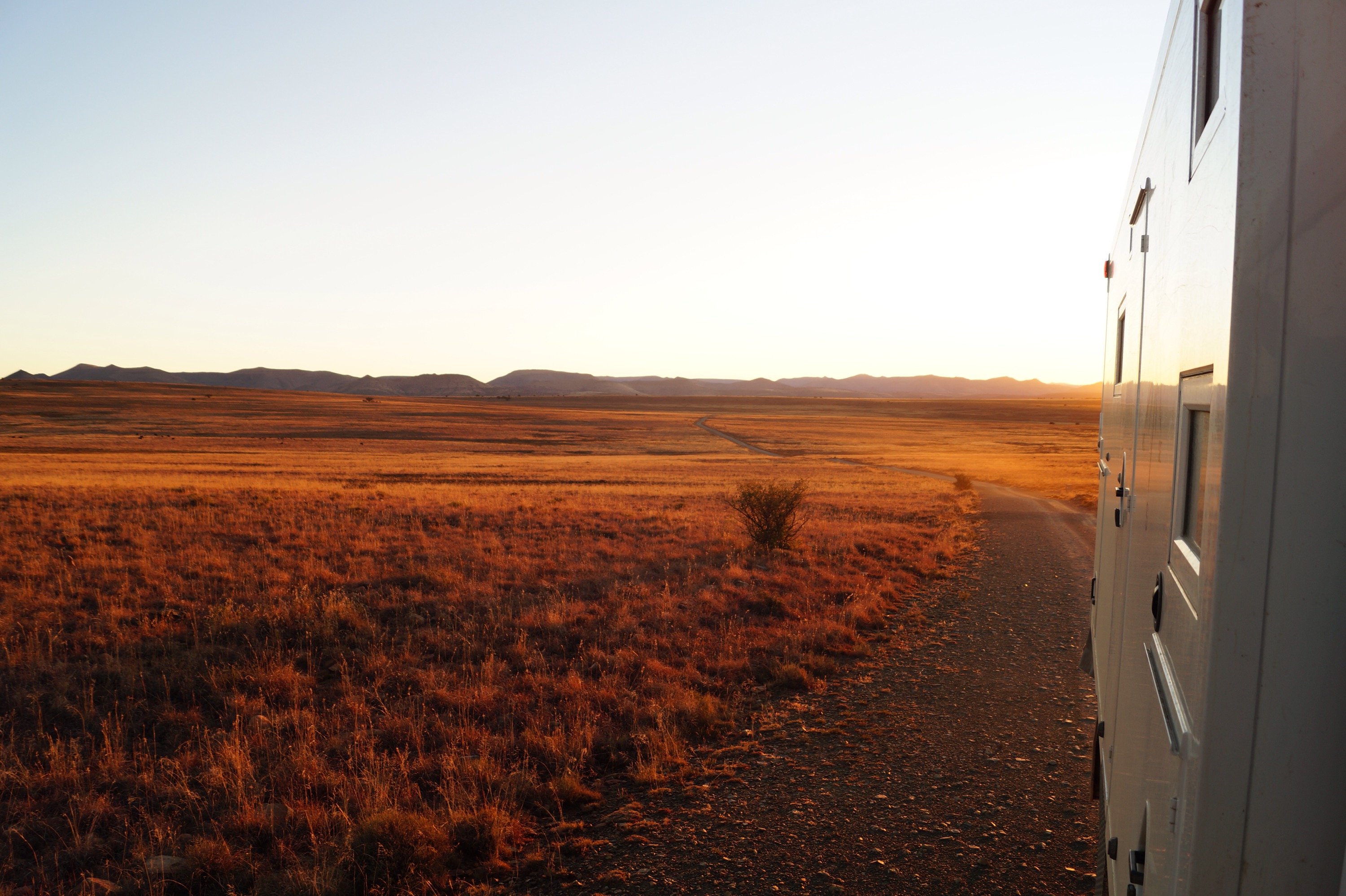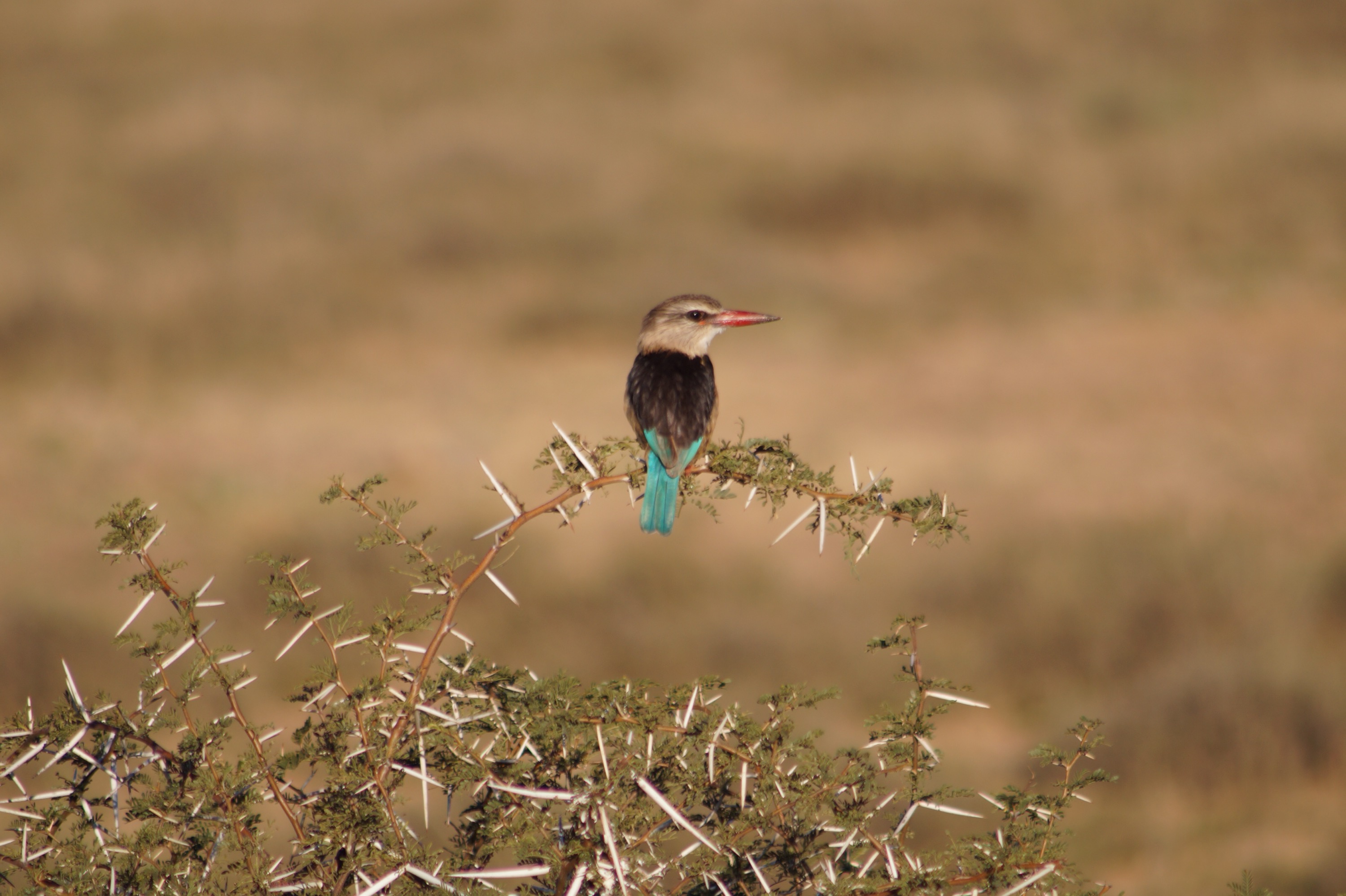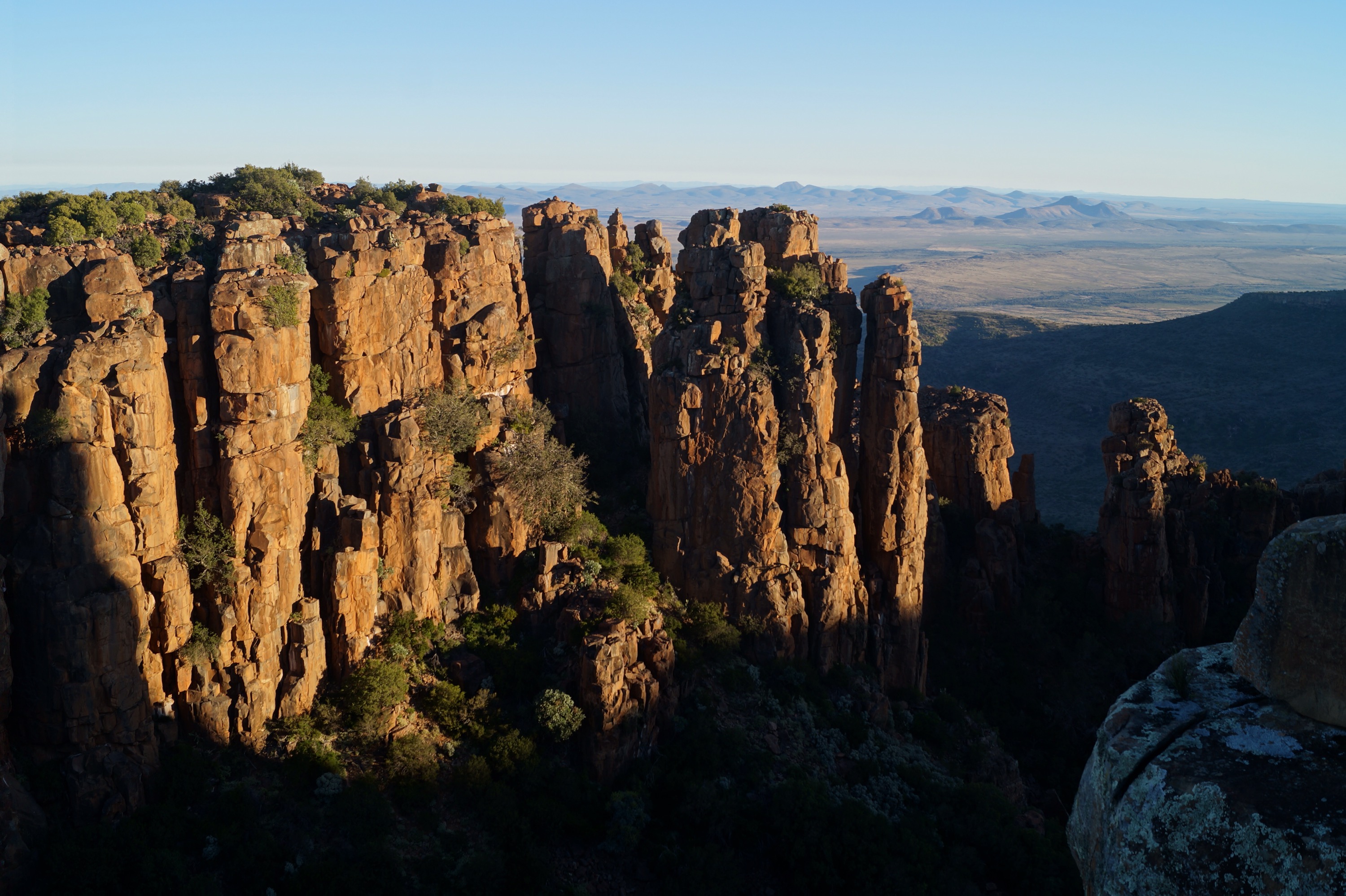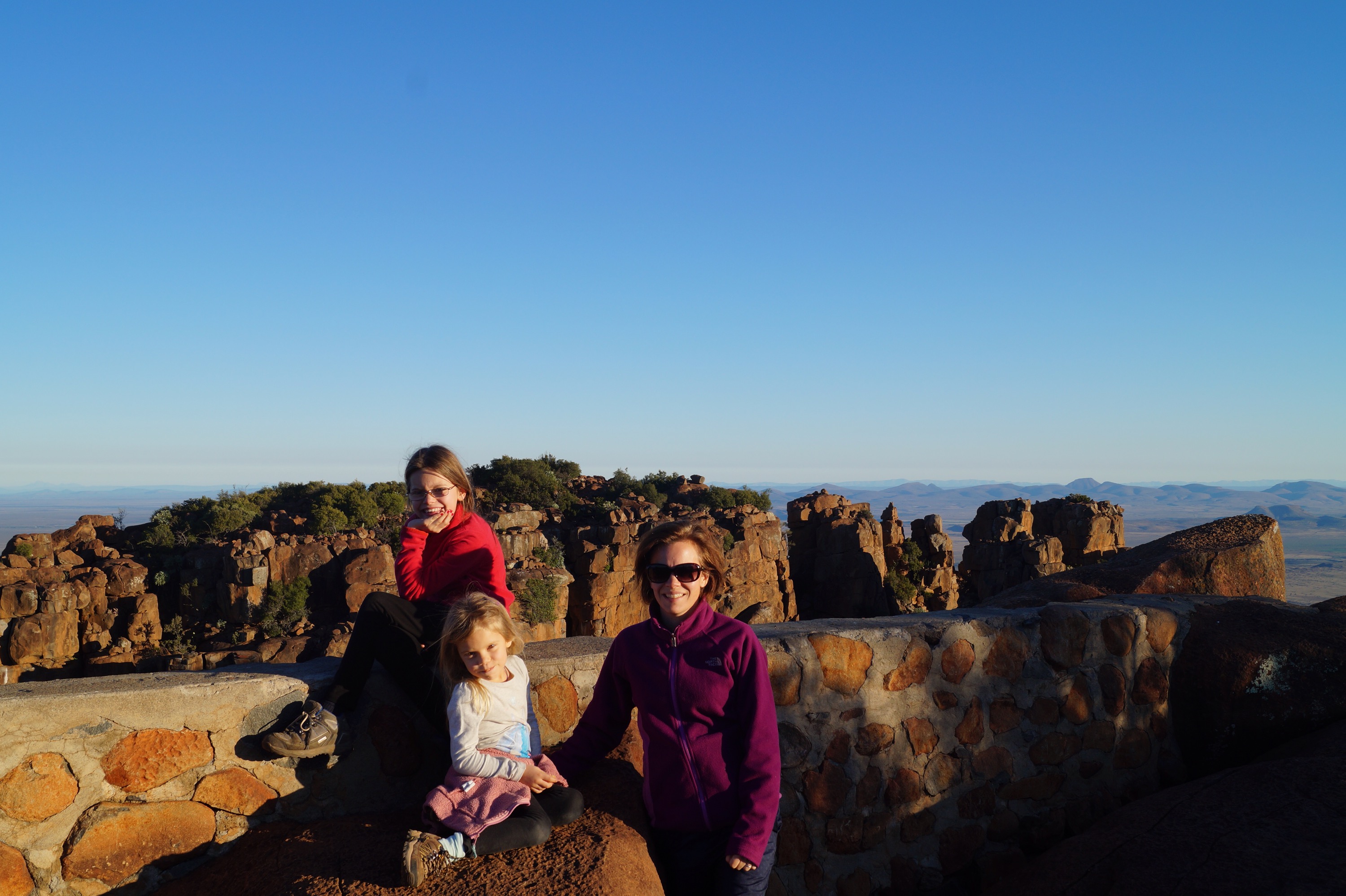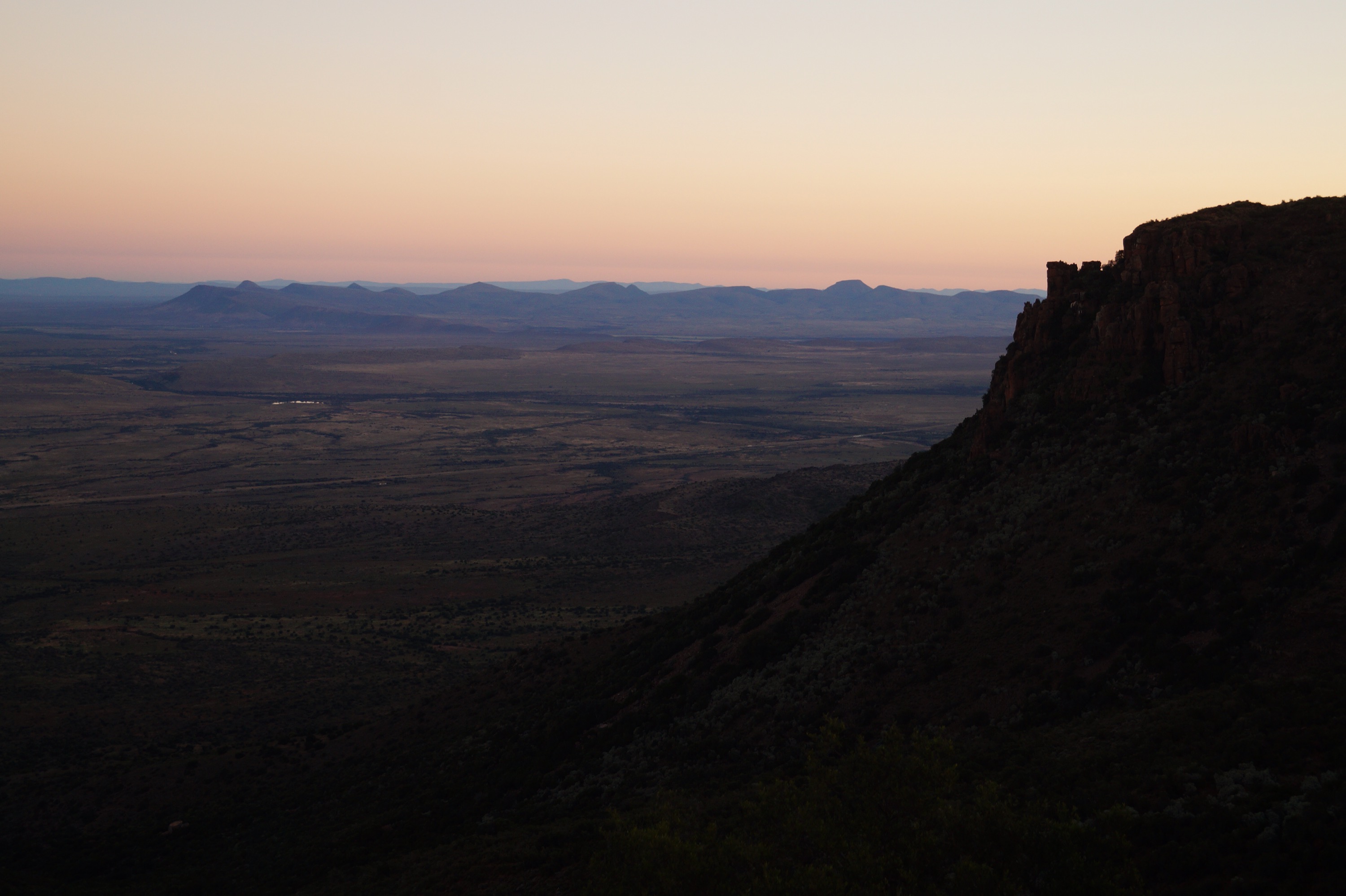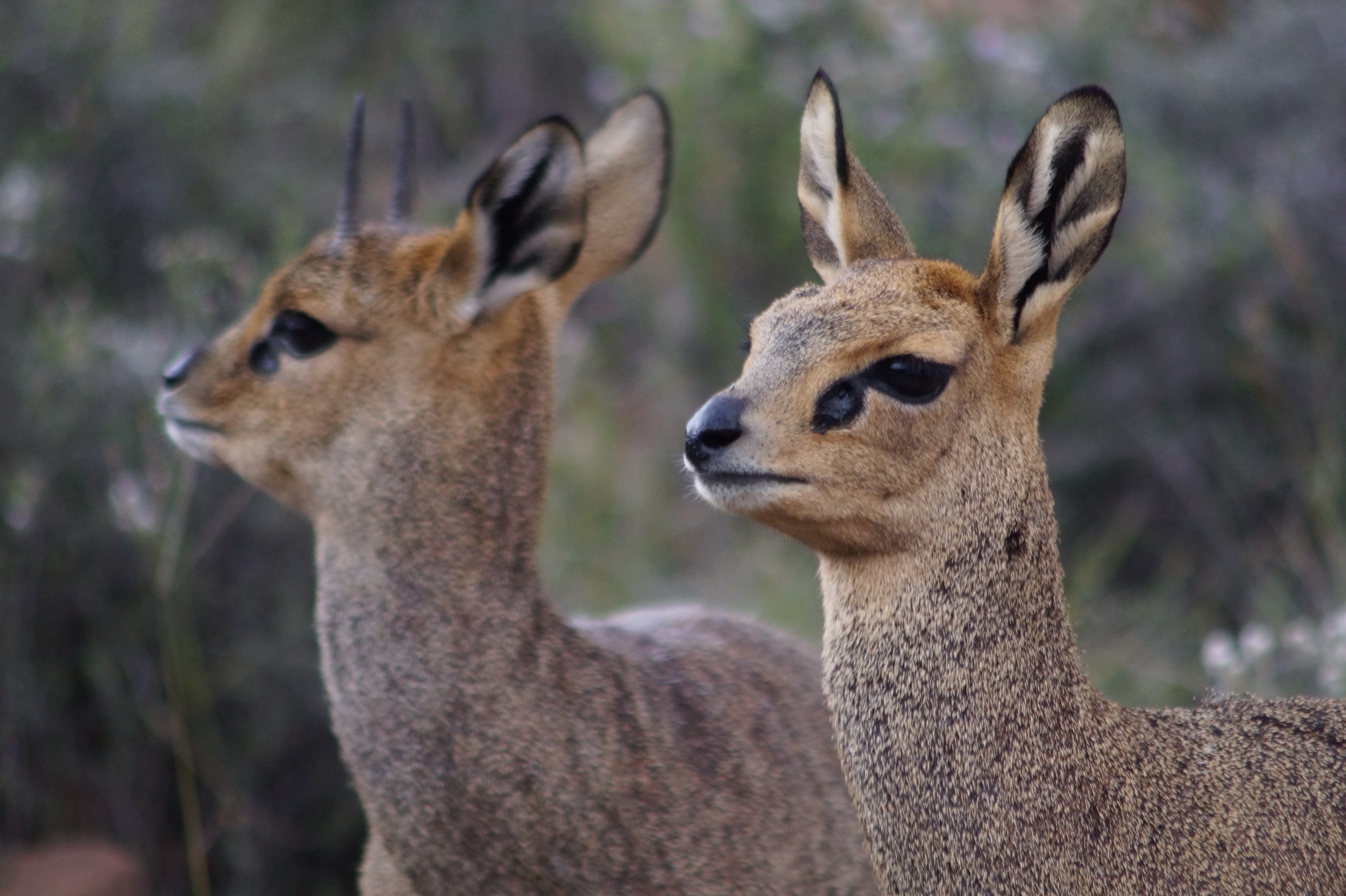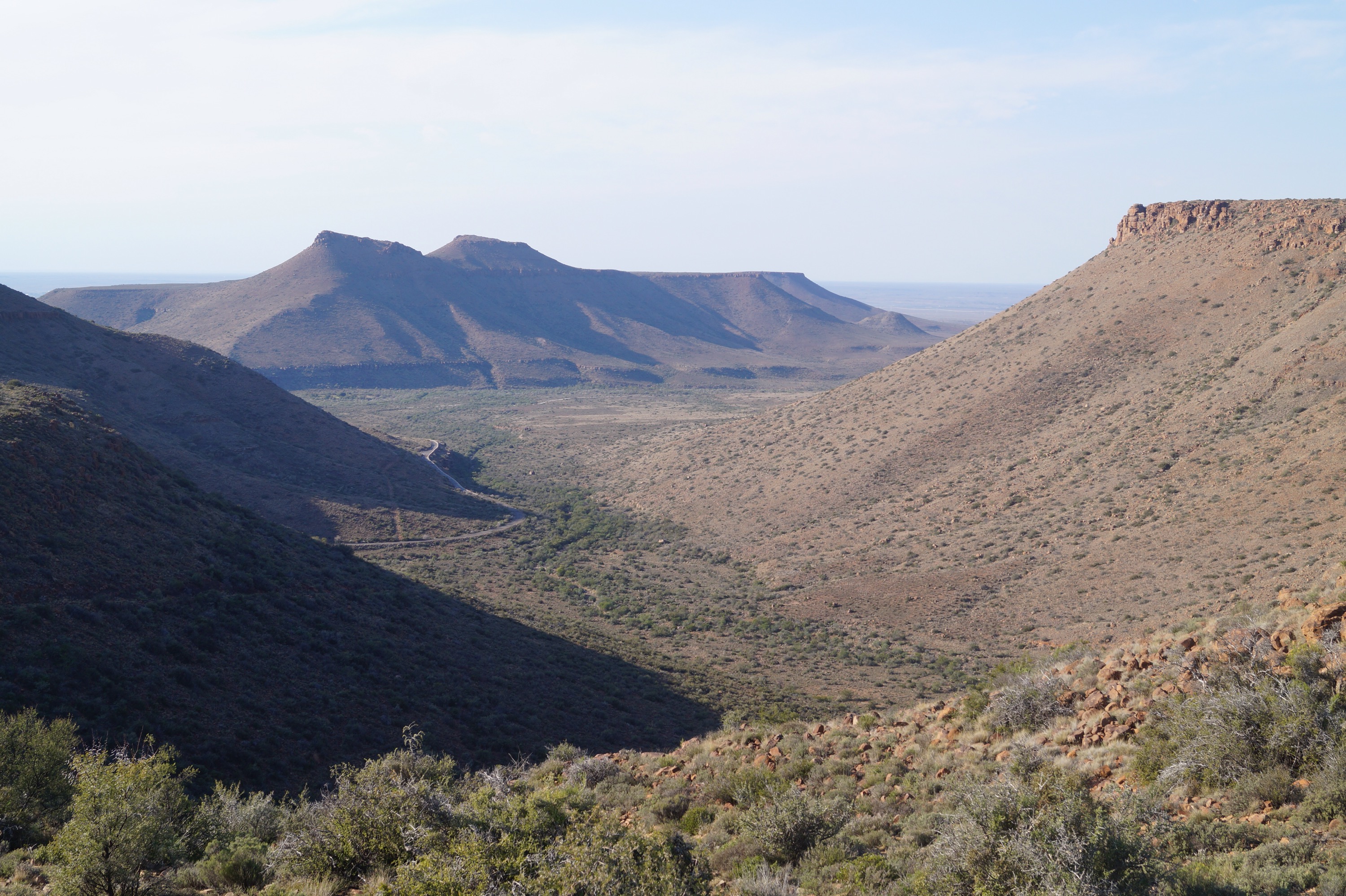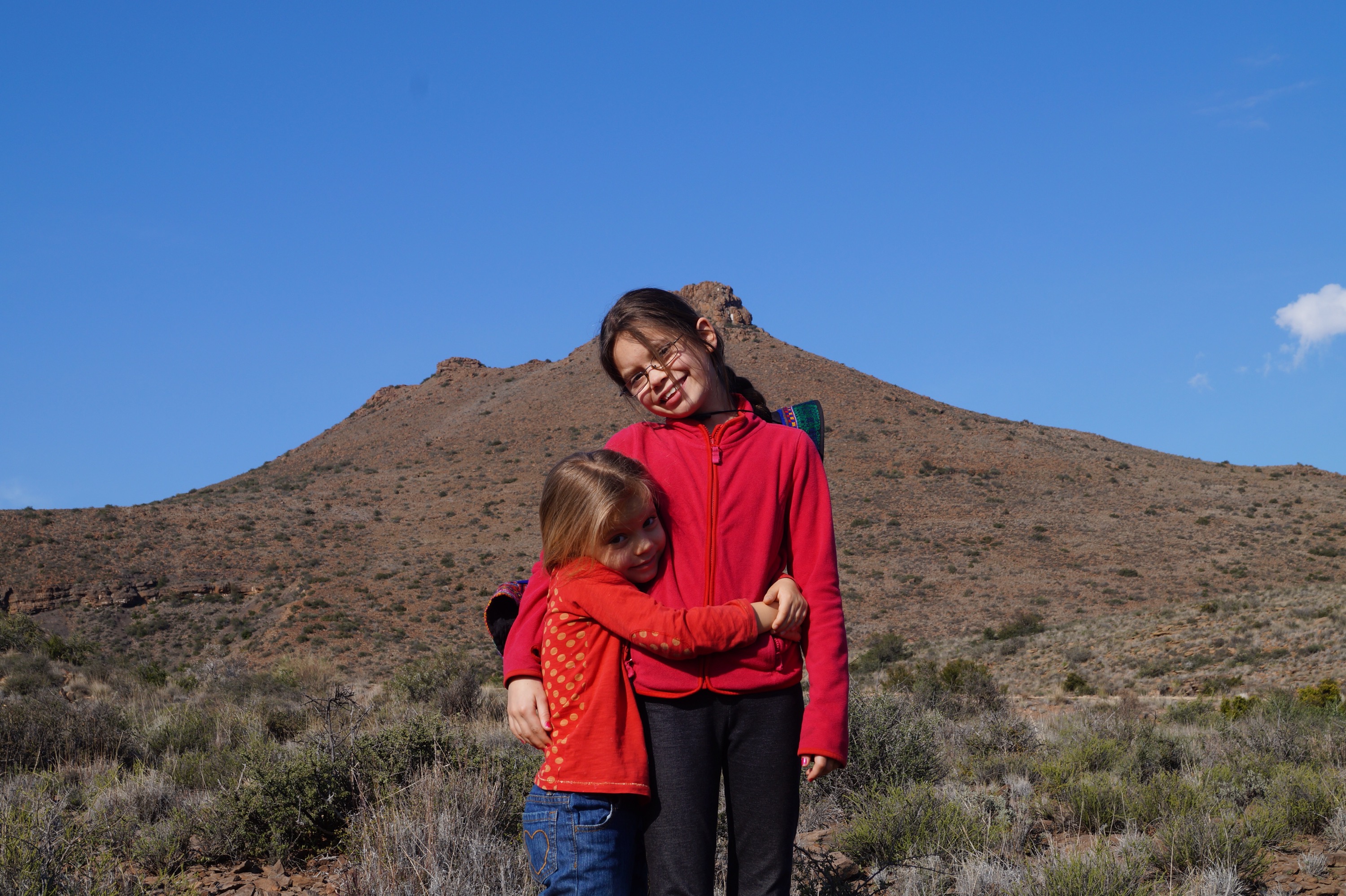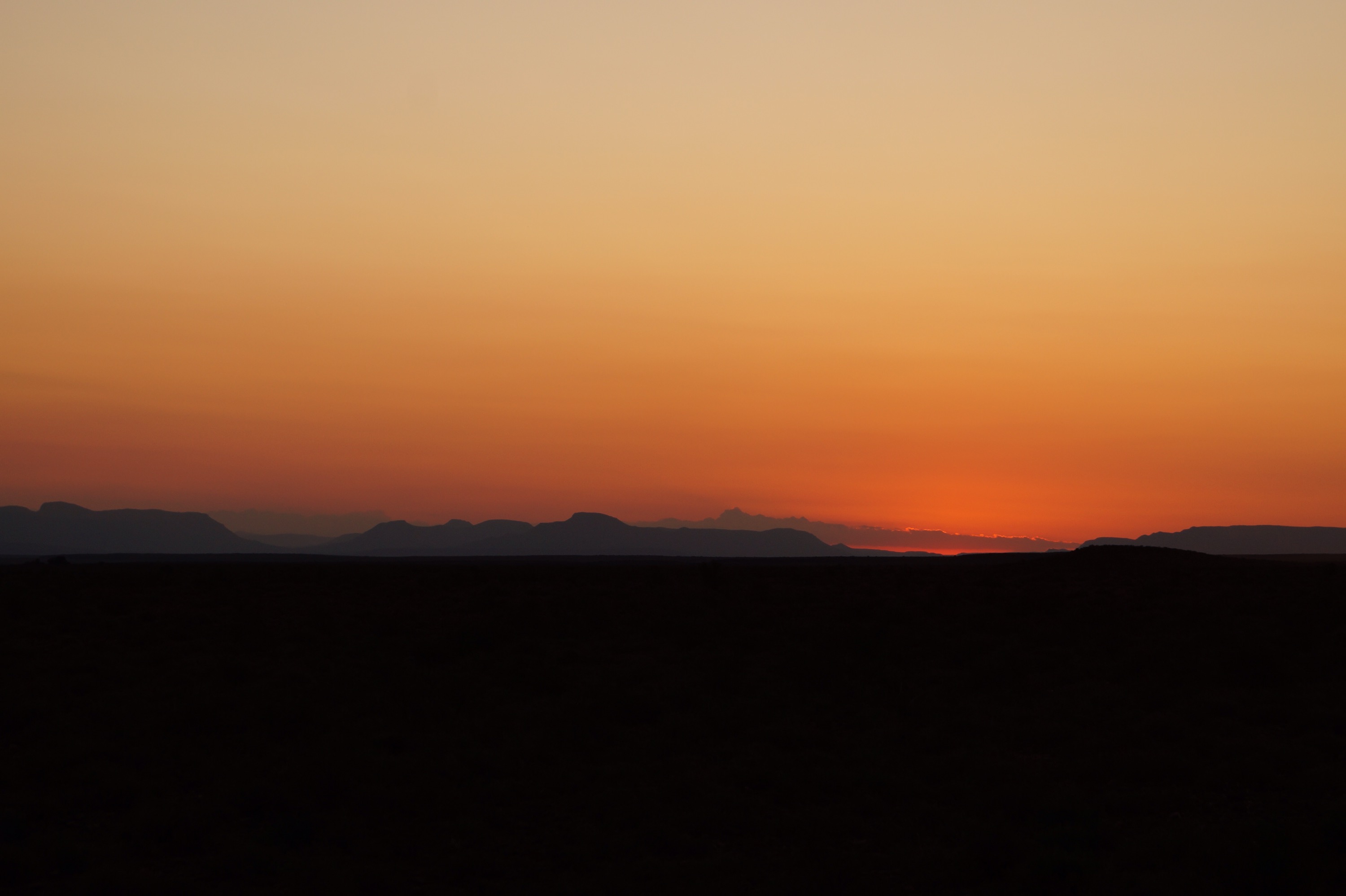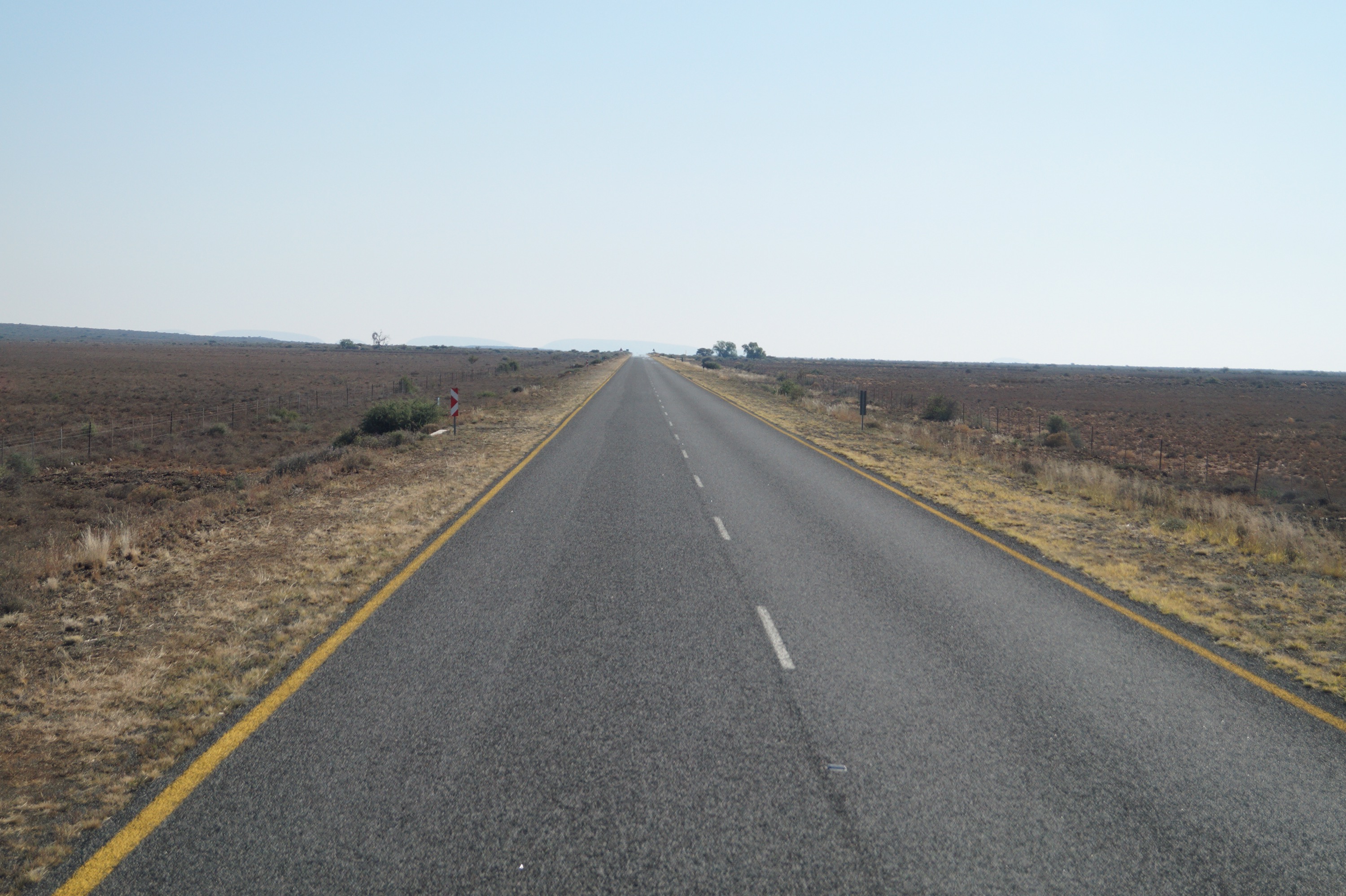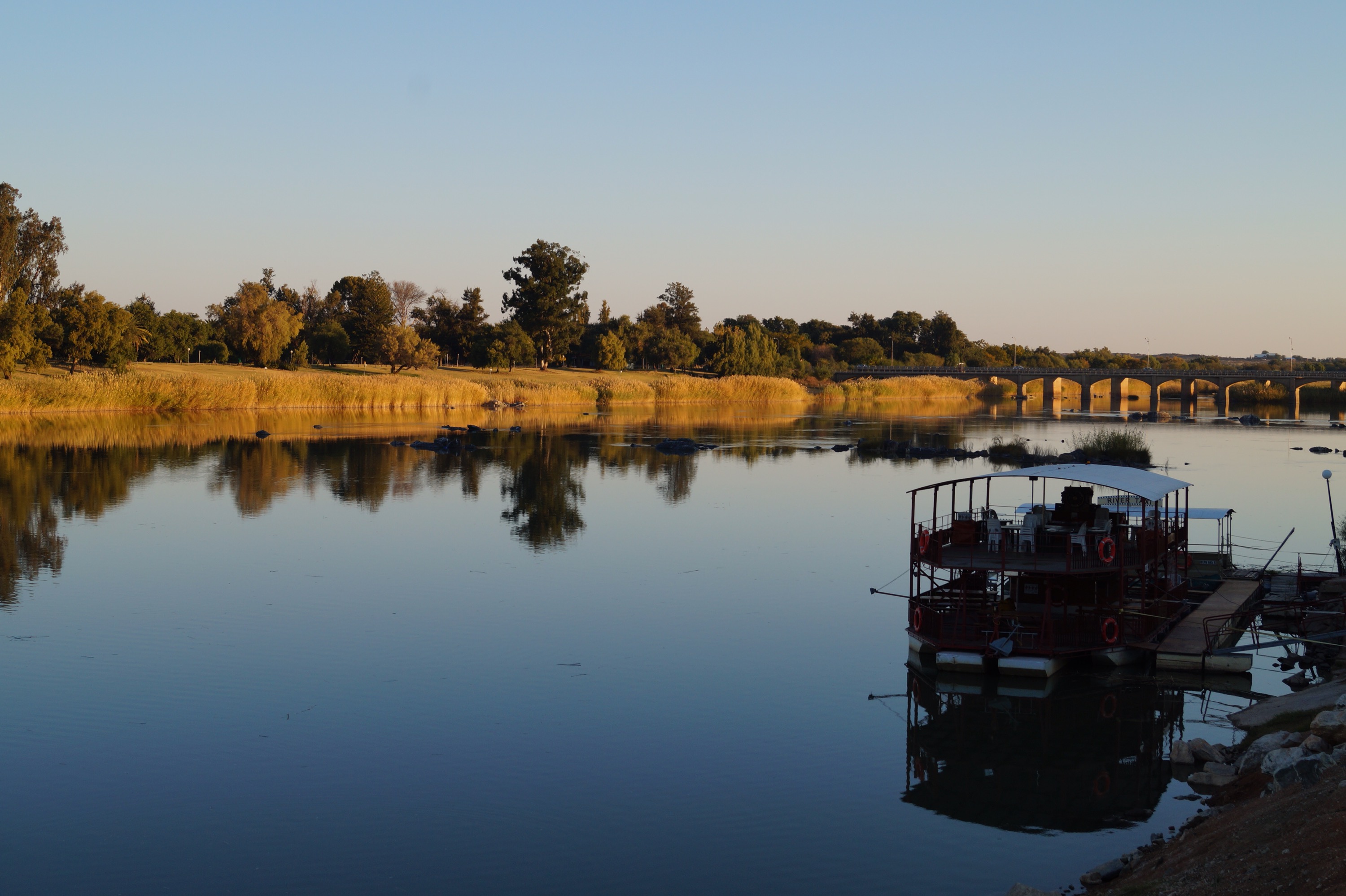I would never imagine that the throbbing of a powerful diesel engine would be the sort of sound to put anyone in the mood for love but I have been proved wrong. It turns out that the truck's dulcet reverberations is the Barry White song equivalent to lusty lions.
We came across two extremely tired looking lions, not unusual for such a languorous species, literally lying on the edge of the road in some bushes. Not wanting to disturb them we kept a few metres back and turned off the engine. I wound up the window quite a lot, they were that close. We watched them dose, yawn and stretch. They were beautiful, just beautiful. The male with a thick black mane that characterises the Kalahari lion, the female with deep amber eyes, that made a shiver go down your spine when she looked directly at you. After 20 minutes we could see a bakkie (south African pick up truck) coming the other way. We signalled frantically to them, so they wouldn't accidentally run over the concealed lions, trying to pass the other side of us on the narrow road. They pulled up just a metre or so from the lions, they were even faster about putting up their window than even we were. All the lions did was flicker an eyelid and go back to sleep. Later after they left without a movement from the snoozing lions, we felt a little more confident that the truck wouldn't disturb them so we crept forward along the road. We actually didn't have any choice as we had to make it a further 120km to the next campsite. However something 3 times bigger than a bakkie moving towards them did cause them to wake up, Steve quickly took his foot off the pedal and turned off the engine. We watched hoping they wouldn't walk off and feeling terrible that we had disturbed such beautiful creatures. But no they didn't move off, just used the disturbance as an excuse for a bit of lion loving. The girls were fascinated to see the facts of life unfolding just a metre from the front bumper. Thankfully they've seen enough natural history programmes to know what was going on. The lions collapsed into an exhausted heap again. We hastily ate lunch, Alisha perched herself on the edge of our bed to eat her tuna wrap to get a view out of the kitchen window. Eventually we felt we had to move on, if we were to get to our booked camp spot before dark. Steve slowly started the engine. The lions roused themselves once more. Oh no! Had he frightened them off ?........ Nope, the engine had stirred them enough for another quicky before we crawled away in the love machine.
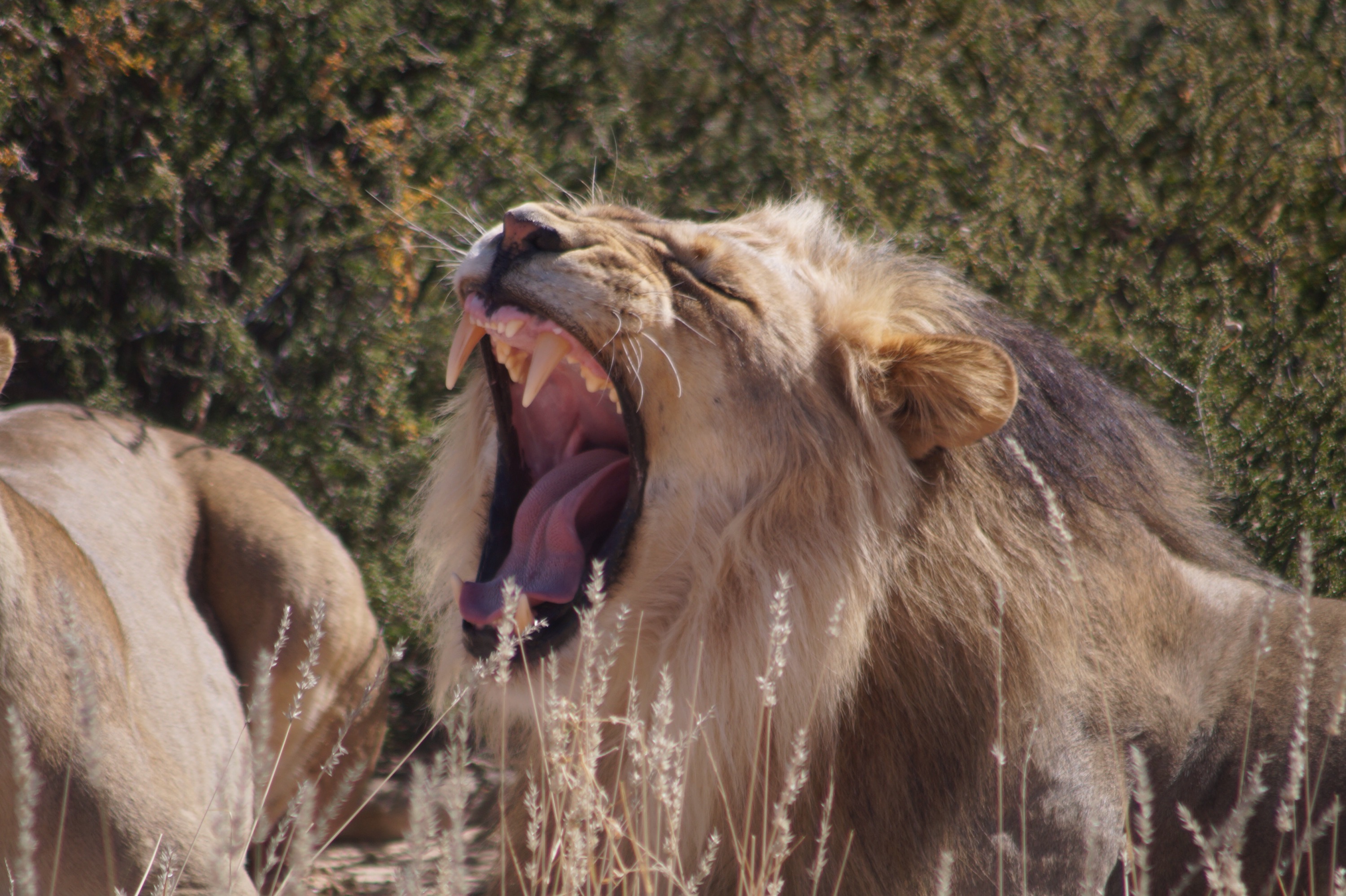

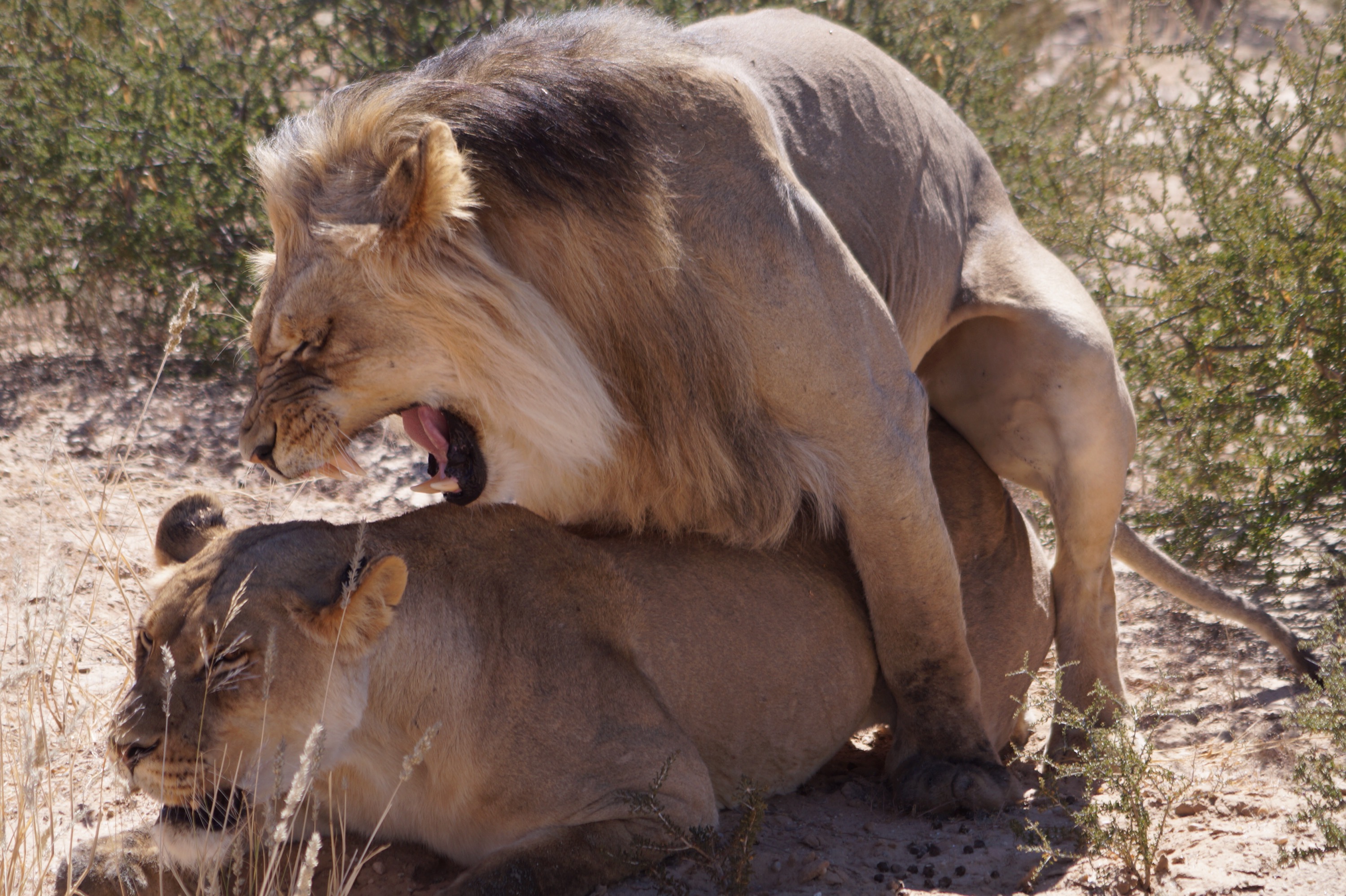

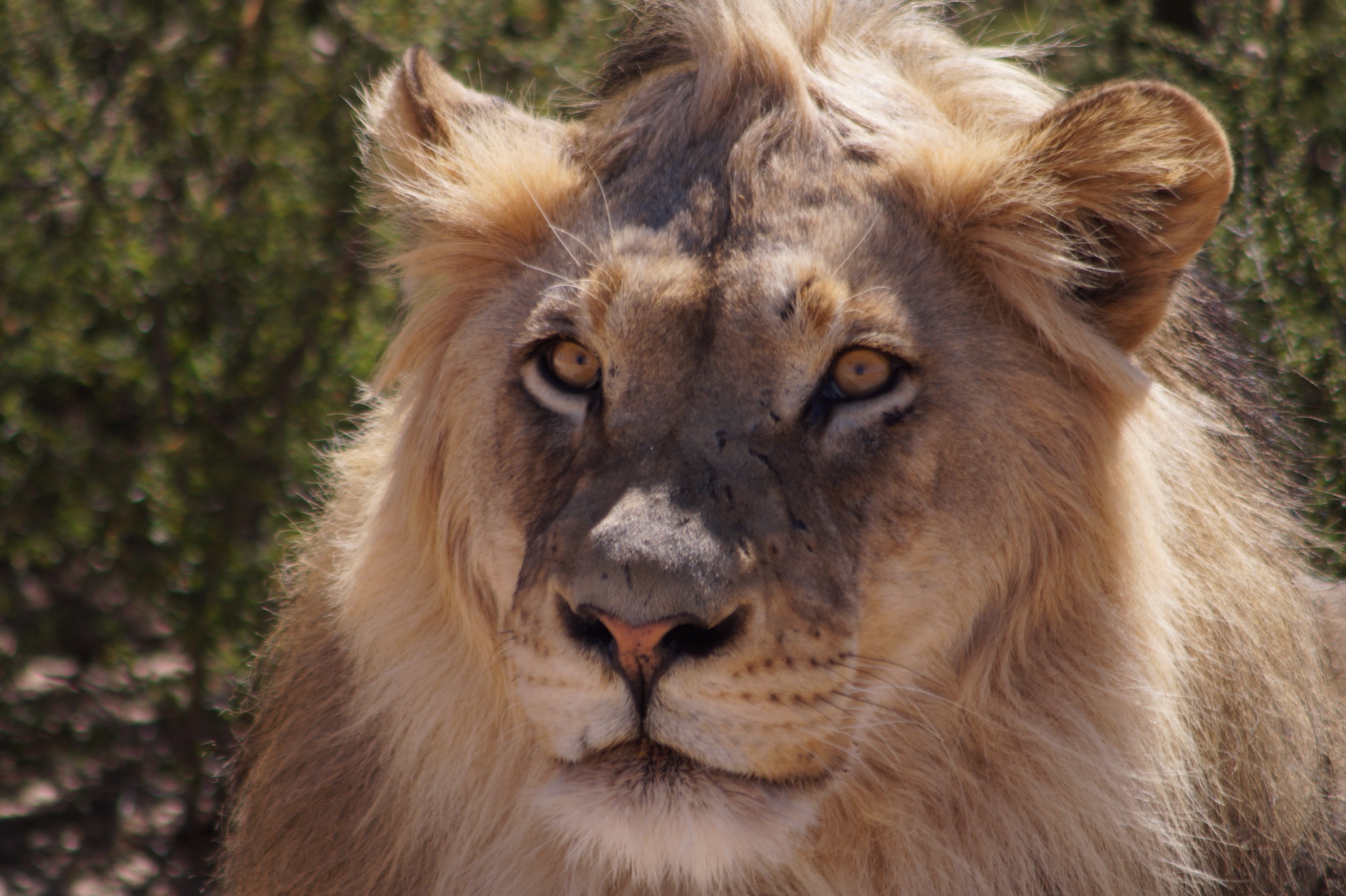
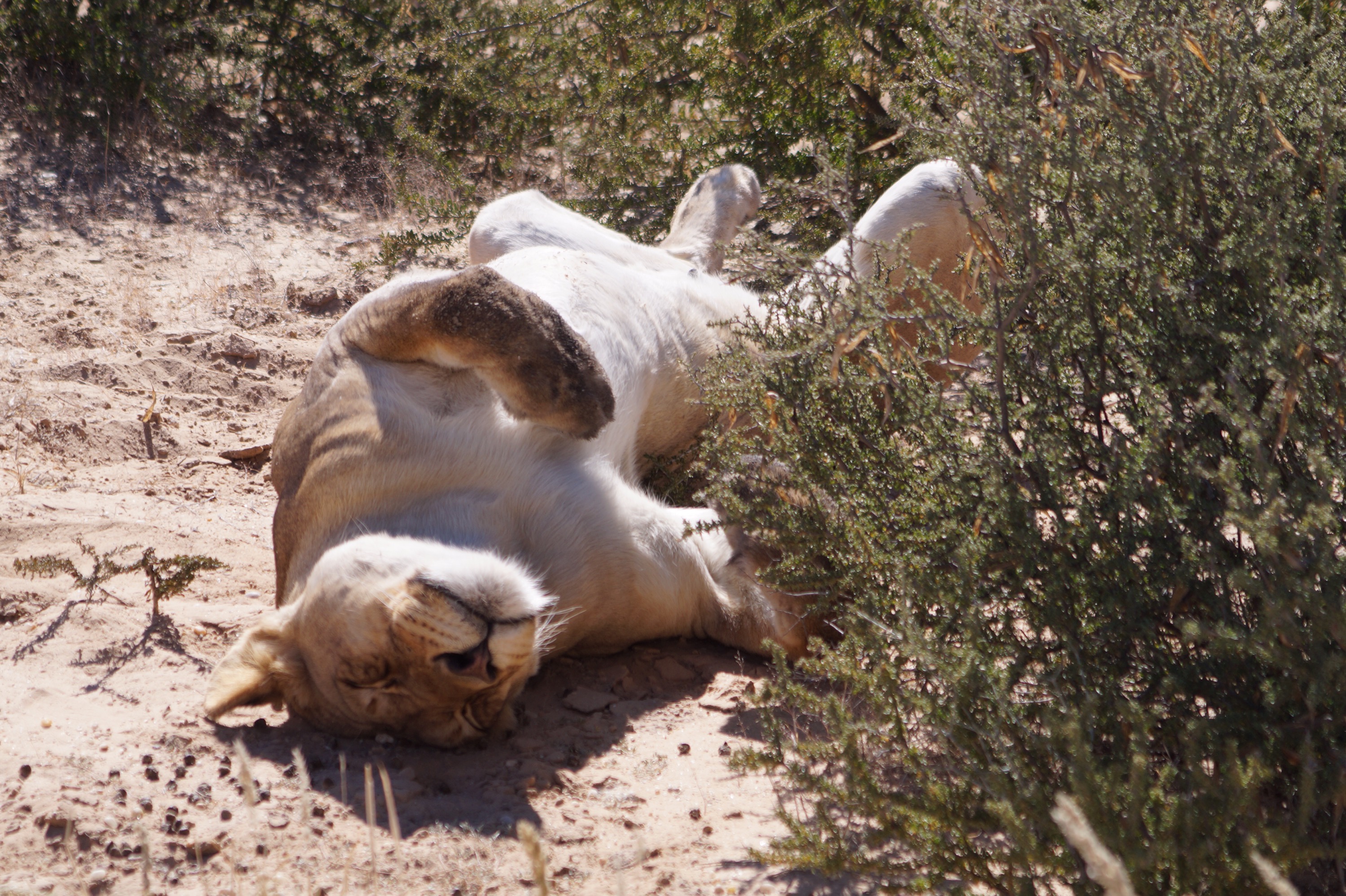
We have spent the last week in the Kgaligadi Trans-frontier park in the red sands of the Kalahari Desert. For some reason, almost certainly due to some colonial past, there is a little finger of South Africa that sticks up between the borders of Namibia and Botswana. The park spans both South Africa and Botswana, and the western side borders Namibia. Borders don't mean much out in the desert. We checked out of South Africa on the Monday but we didn't need to enter Namibia till a whole week later and we had to pass through Botswana to get to the main park road.
Full of lightly grassed red sand dunes, the park is bigger than Germany. The main two roads ran along two river beds, the rivers are subterranean so although you can't see any water there is enough moisture in the soil for some trees and bushes. Due to its arid climate, it doesn't support all the species found in Southern Africa but what it does have is cats, lots of cats. But saying that it isn't that easy to find them, the area is huge, we drove about 1000km over the seven days.
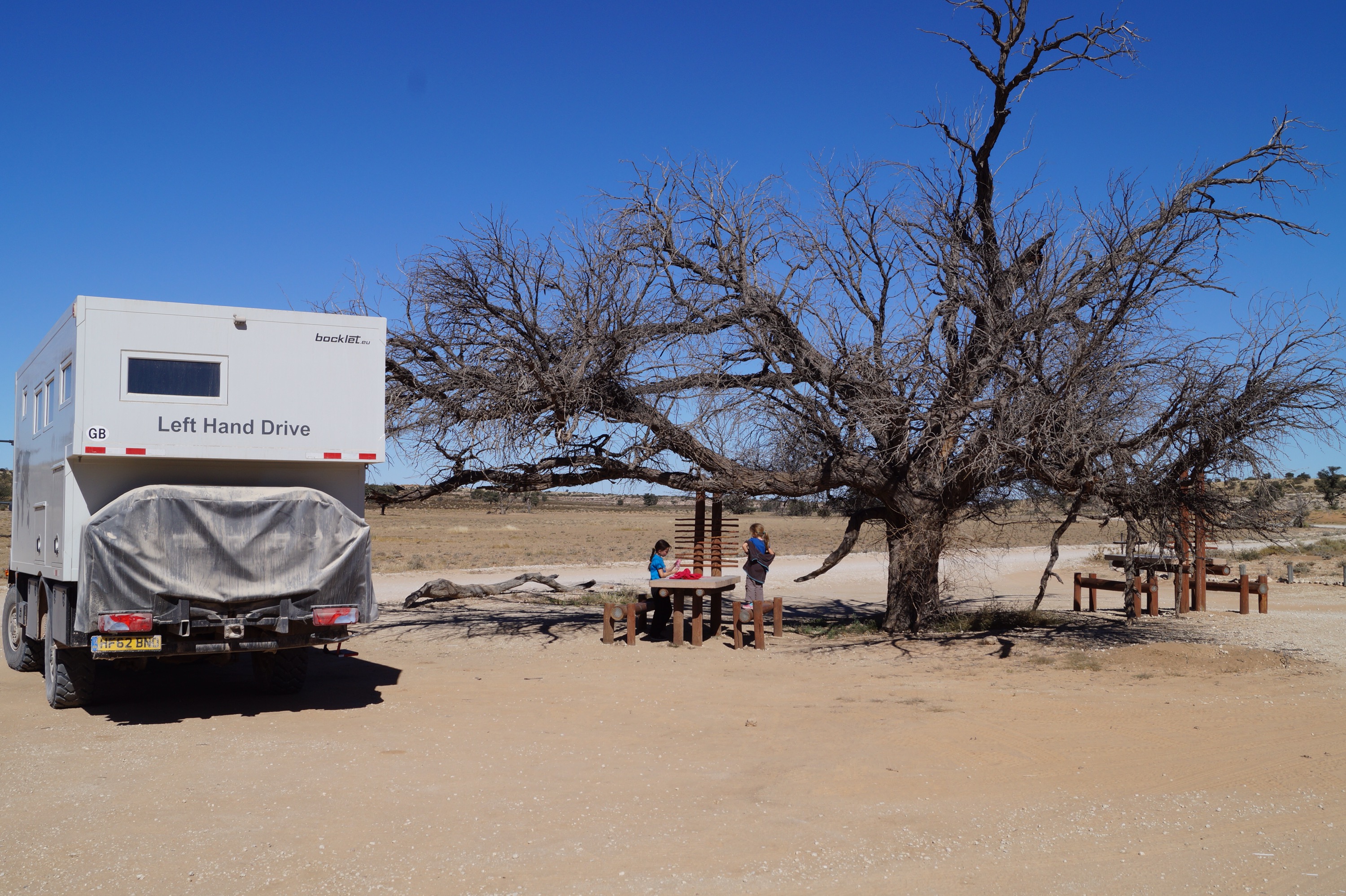
The South African part of the Kgaligadi Park is the most popular and has the easiest online booking. Due to its remote nature it seems to attract true nature and outdoor loving visitors, it's 3 campsites were full of the coolest 4wd off-road vehicles and trailers. As we couldn't book till last minute we ended up hopping between the different camps. At Nossob, the camp furthest North all we could book was a chalet for a night. Initially excited at the prospect, the girls decided in the end that they would prefer to sleep at "home", which was parked just outside and was far warmer.
Every morning started cold and clear as the temperature dropped to below zero every night. Heading out early we expected to find cats walking along the road, they like the soft sand on their paws, like we have in other places on safari. But in the desert in winter, it was far too cold for that, so instead we scanned the tops of dunes where they were slowly warming themselves as the sun rose higher. Sometimes it was just a hint of a head, paw or back could be seen in the distance but just occasionally we were rewarded with an amazing sighting.

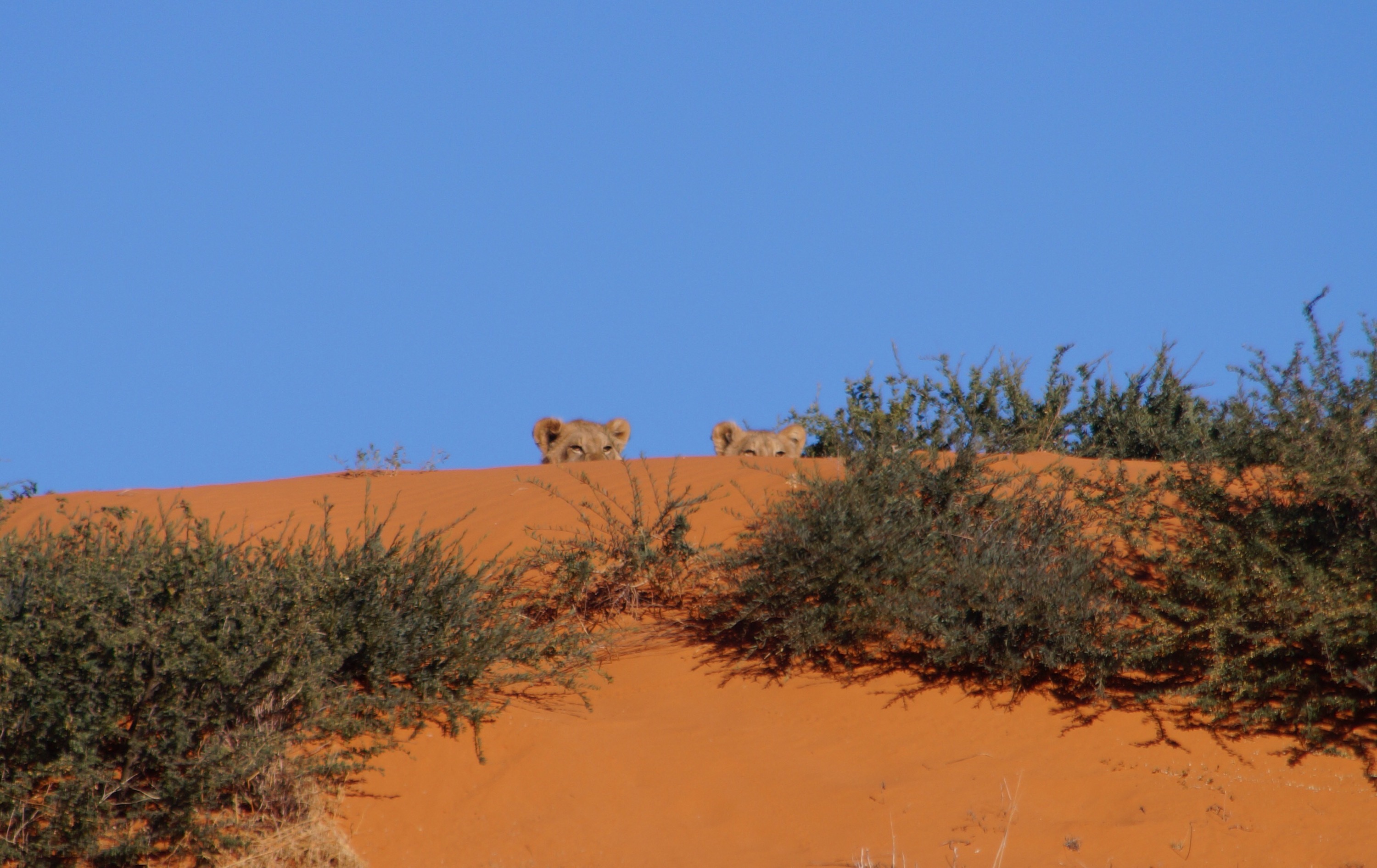
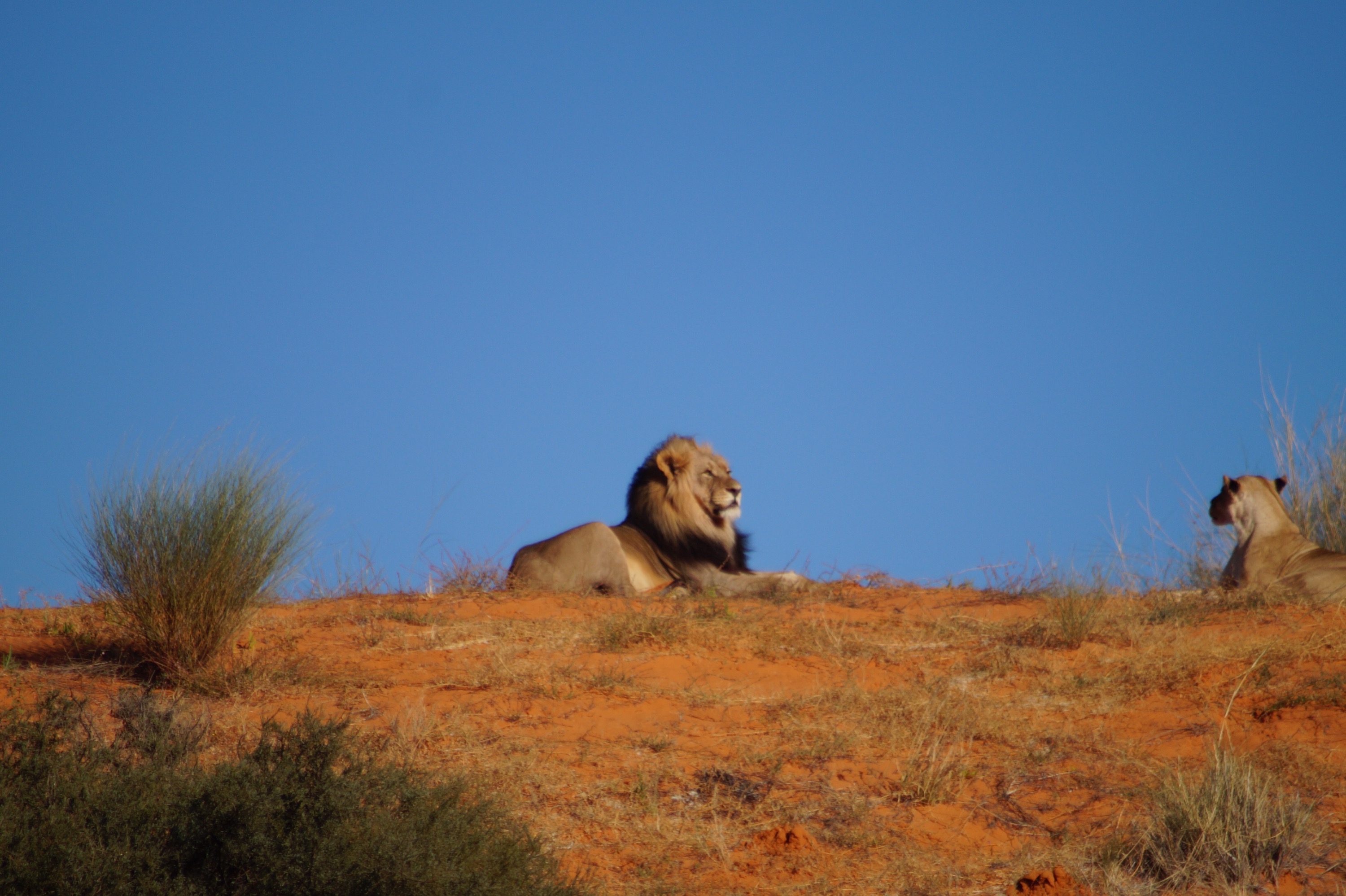
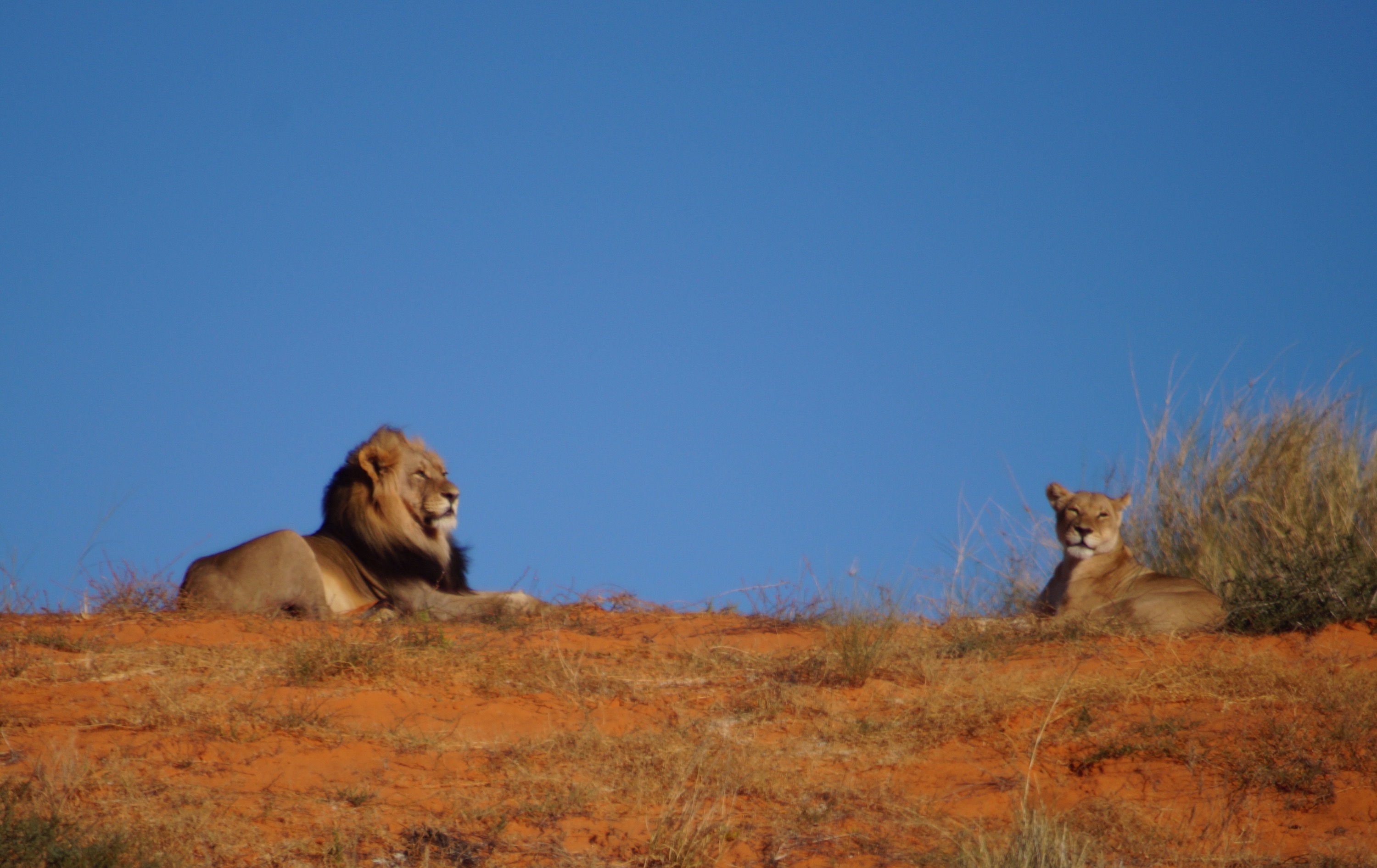
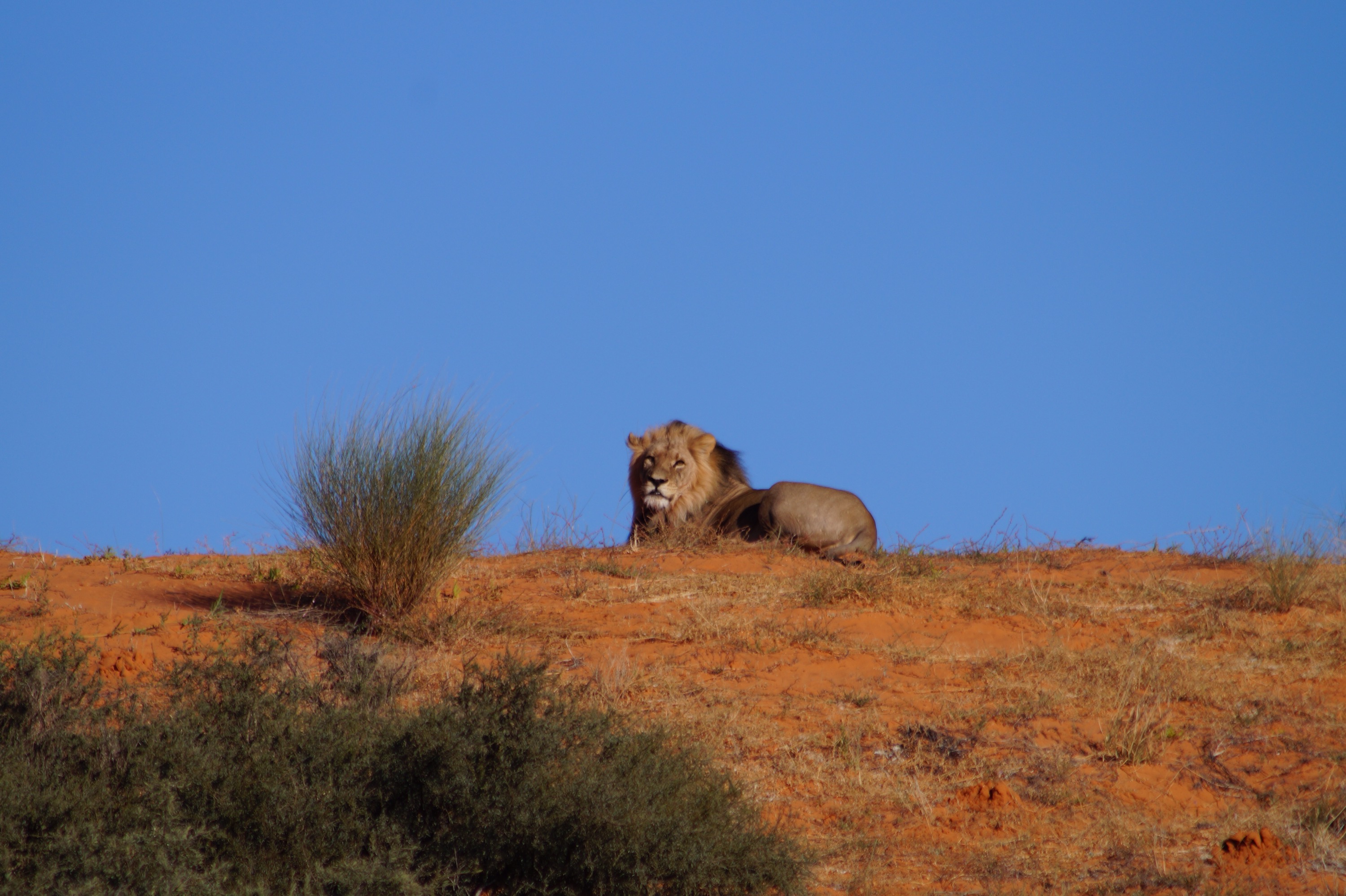
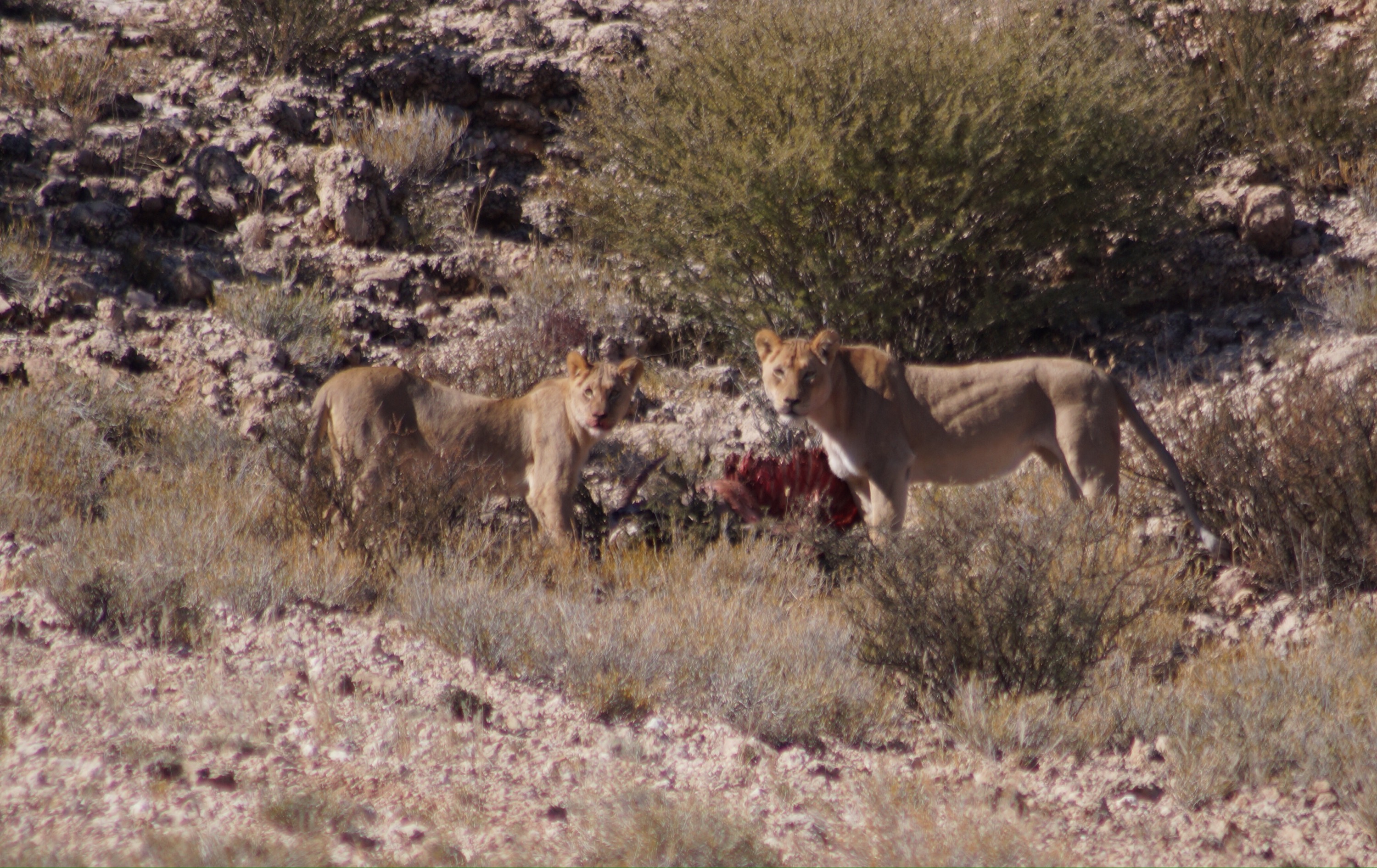
We spent every day driving, stopping for school in chunks, while we were watching at a waterhole or waiting to see if a distant cat would come closer. Leopards are notoriously difficult to spot in the day time but our patience paid off when a older shy female slowly made her way down to drink from a waterhole. We had spotted her an hour before high up in the dunes, the girls happily played a complicated game with their dolls on the cab floor, while we scanned with the binoculars. All games were forgotten as we watched her drinking, constantly scanning the horizon, she seemed completely oblivious to any vehicles though. We've found the game here very relaxed around cars, apart from the amorous lions of course.
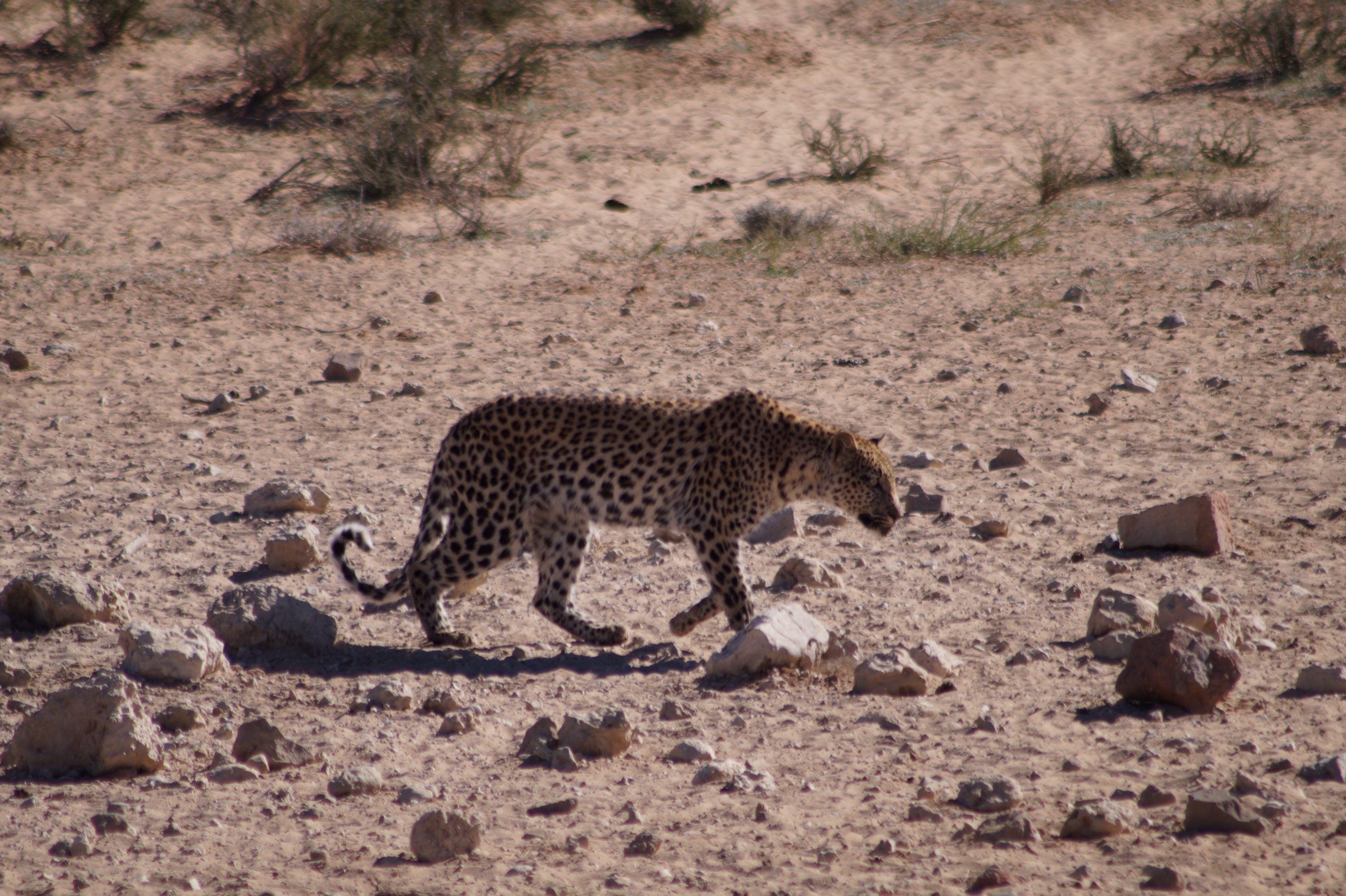

After a couple of unrewarding days we were thrilled on our last full day in the park to see a mother cheetah and her 4 almost grown cubs striding along the road. Watching them interacting together and looking for game was magical. After watching them disappear into the dunes, we continued along the road just a further kilometre to see 3 female lions walking straight towards us in the road. We could have almost touched them as they walked straight past the stationary truck.

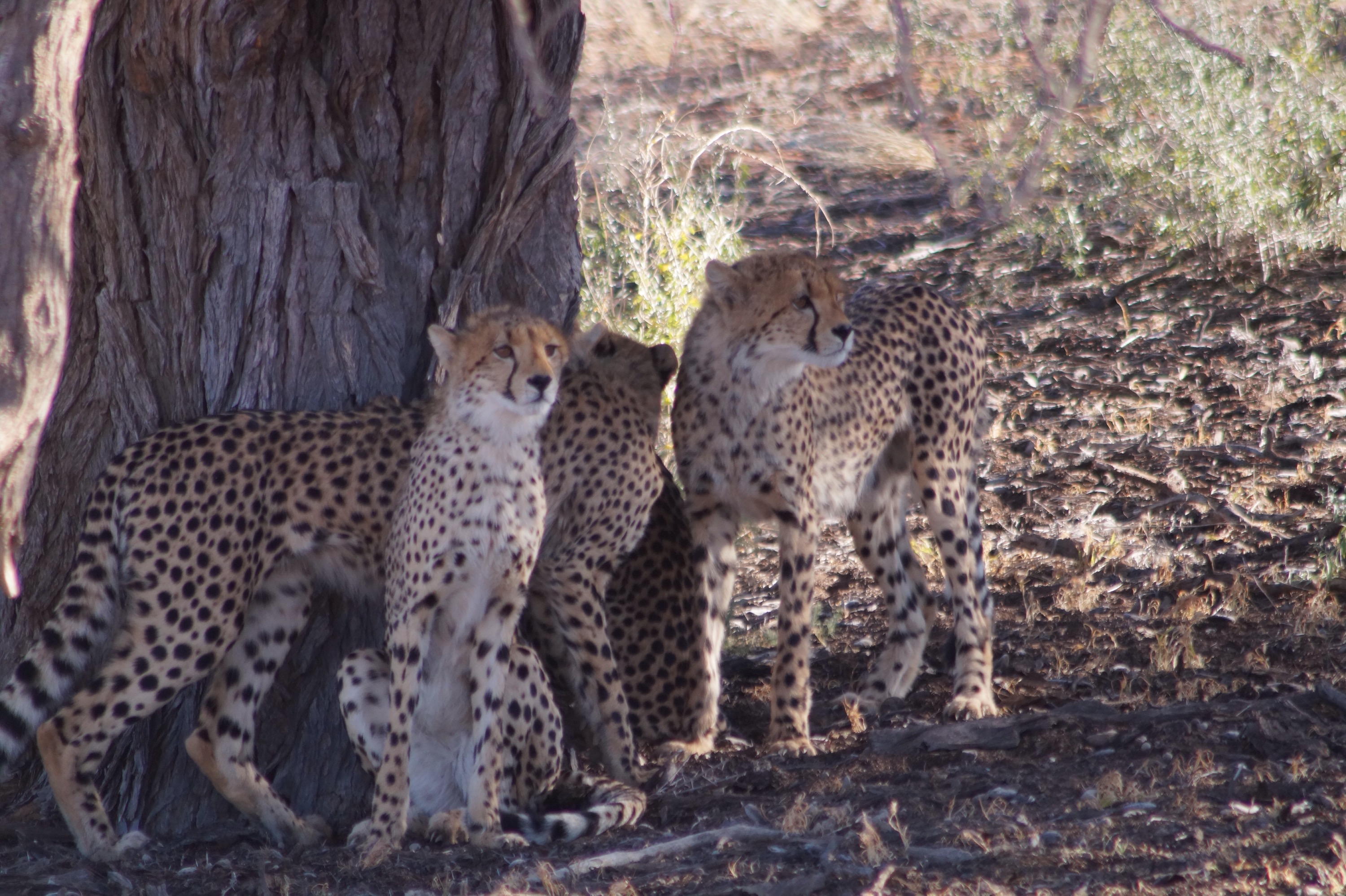
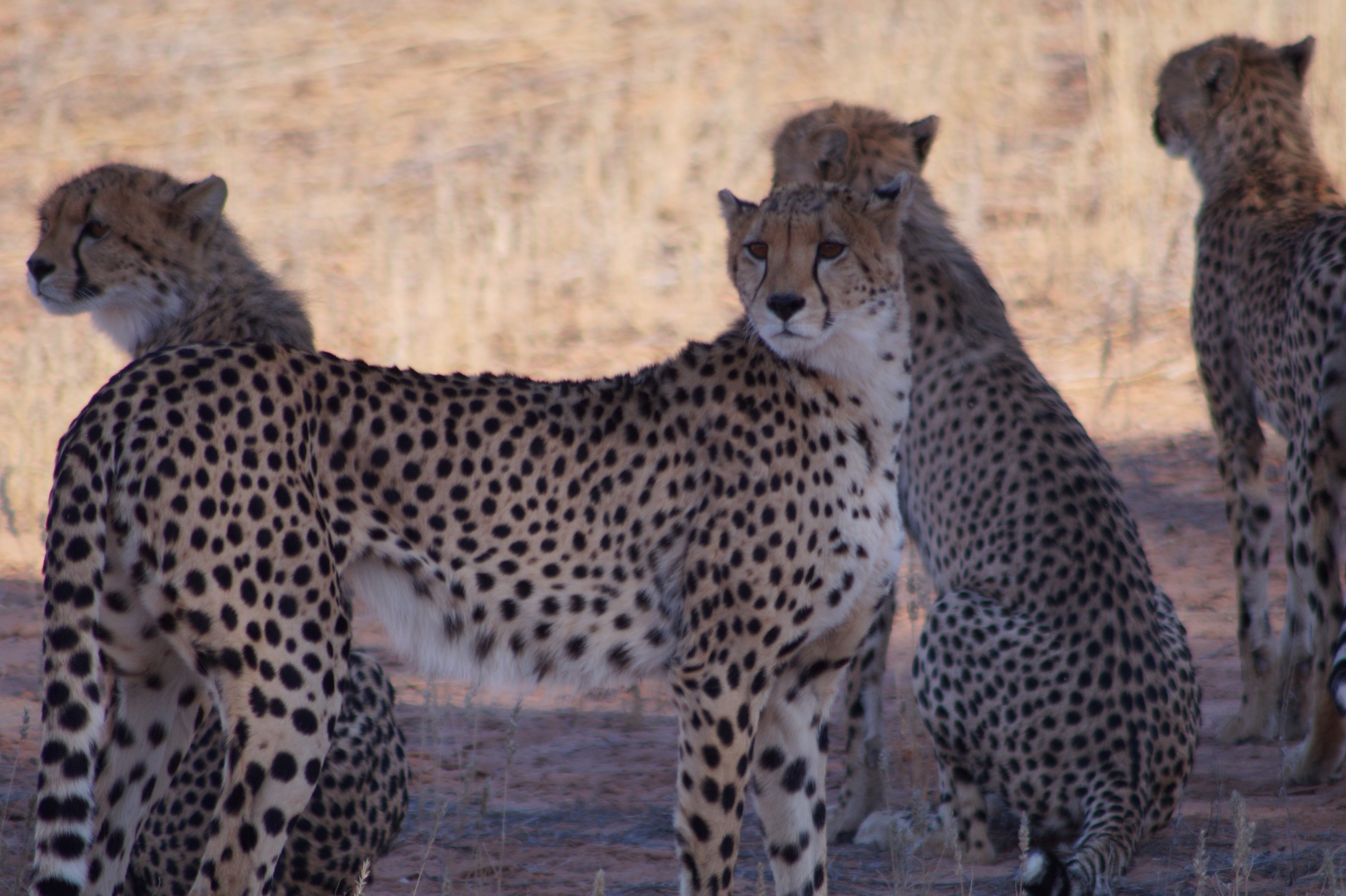
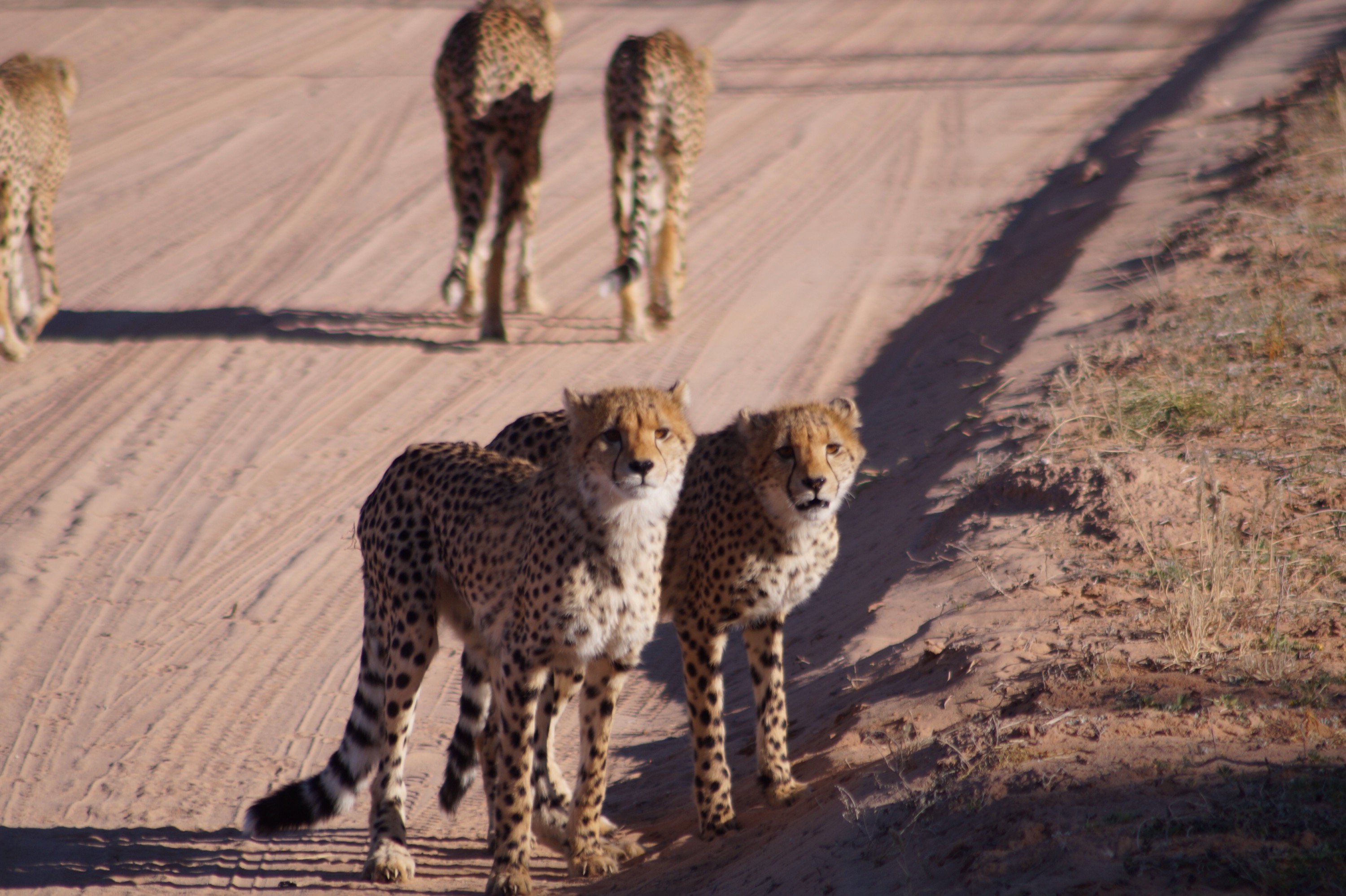
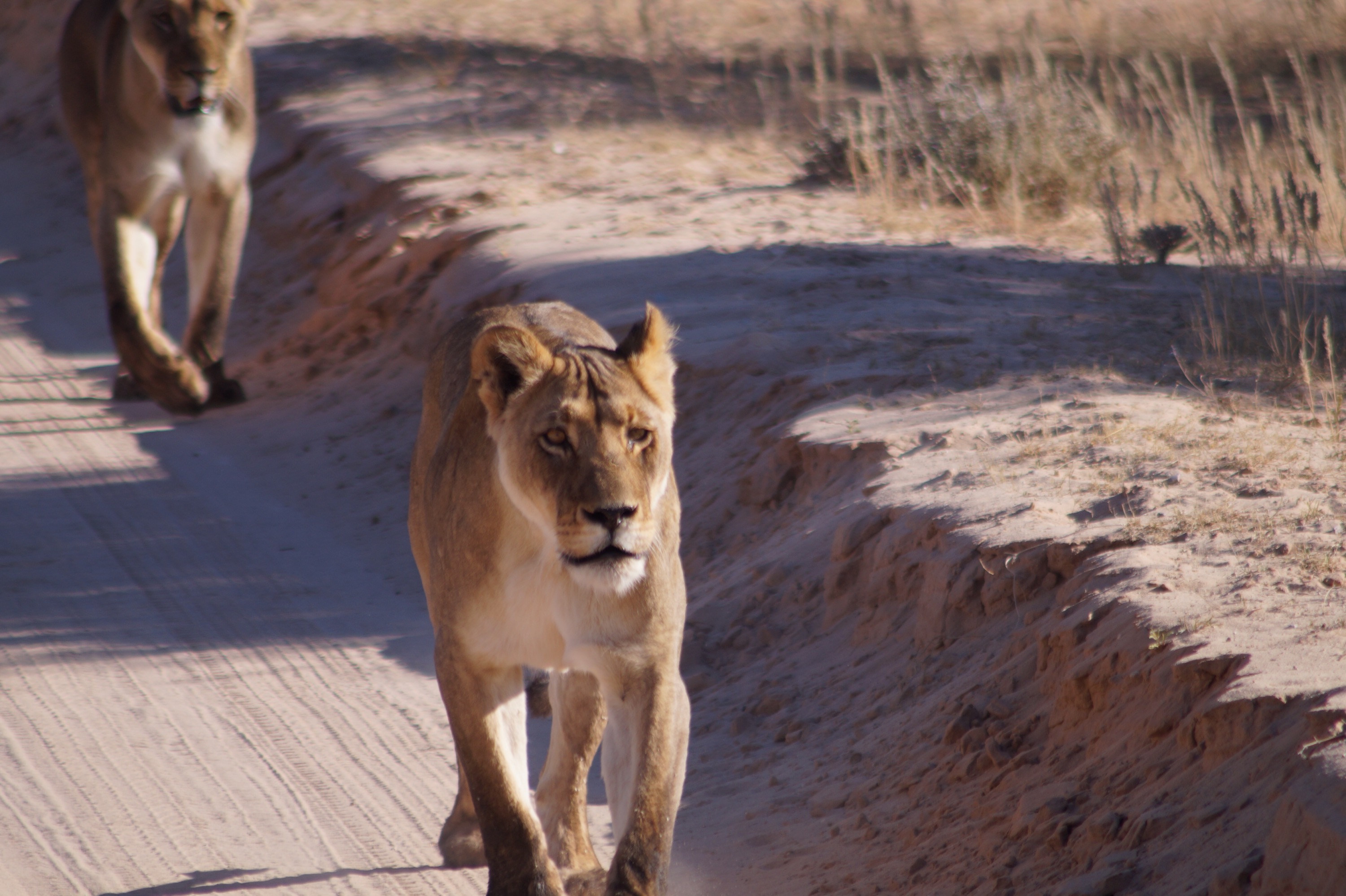
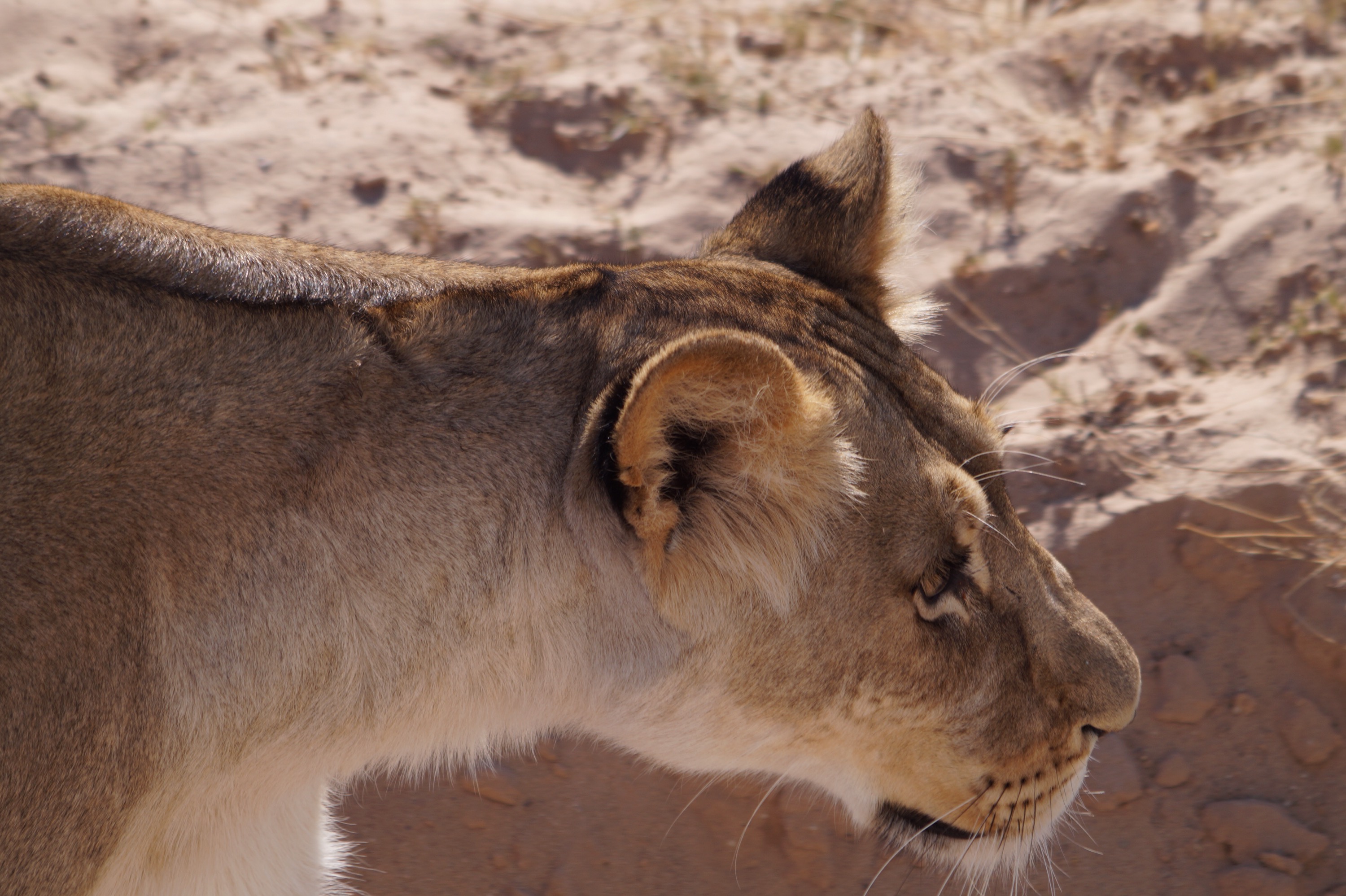 The park also has some of the true desert animals like the regal looking gemsbok (oryx), bat eared foxes and springbok. The girls couldn't believe how far the springbok could jump straight off the ground from standing when they pronked, a response to danger. Watching the meerkats and their very human like stance, delighted them too.
The park also has some of the true desert animals like the regal looking gemsbok (oryx), bat eared foxes and springbok. The girls couldn't believe how far the springbok could jump straight off the ground from standing when they pronked, a response to danger. Watching the meerkats and their very human like stance, delighted them too.

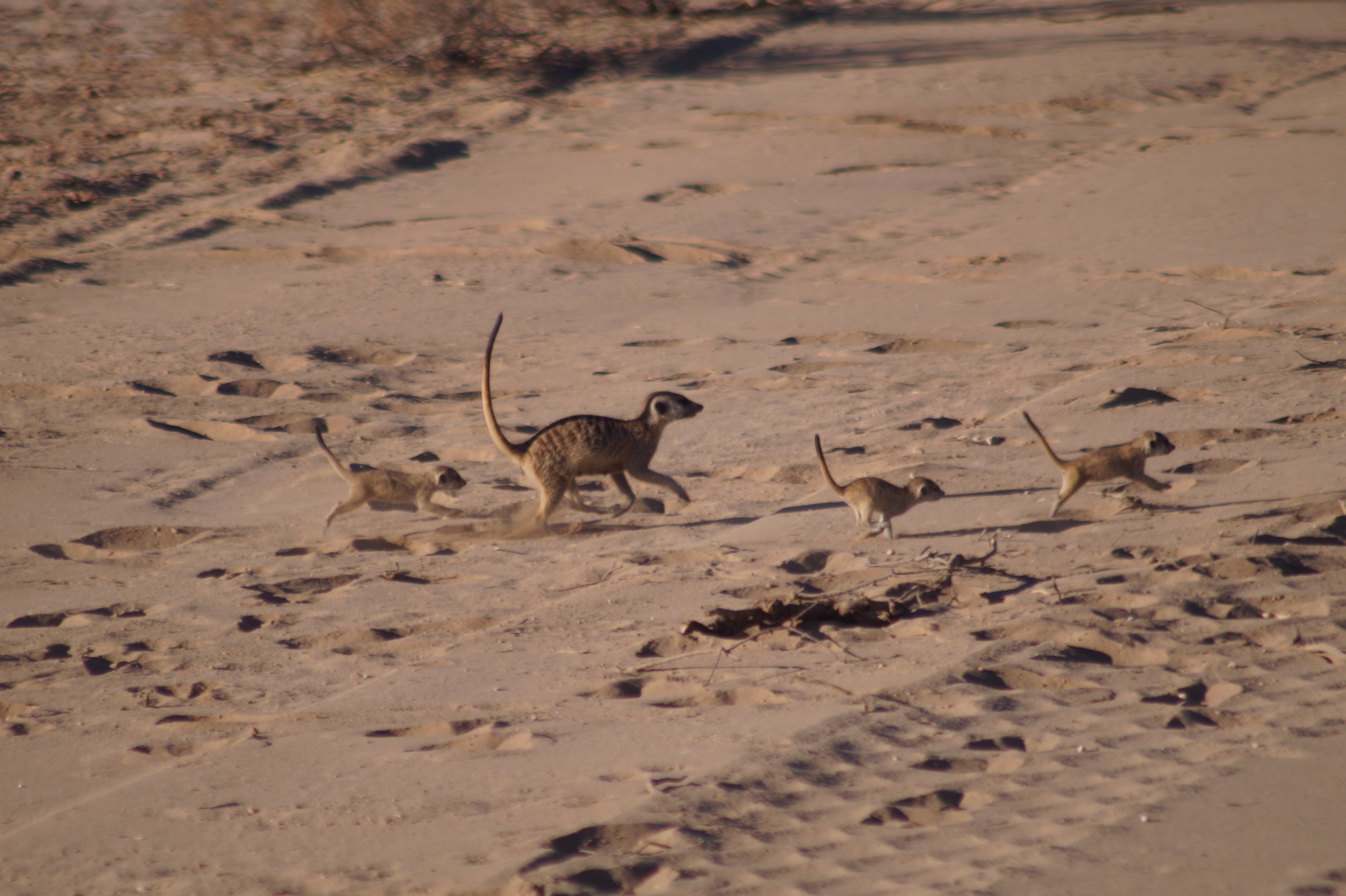
Although the main campsites are fully fenced it was the wildlife inside the fence that delighted us. Hornbills, crimson-breasted shrikes, lilac breasted rollers and lots of other birds perched in the shade trees. The huge collective nests of the sociable weaver astounded us. Whilst on the ground the foxy faced slender mongooses and bushy tailed ground squirrels were so used to humans that they went about their foraging as usual, much to our fascination. On our last night the smell of all the braais (barbecues) bought a large spotted hyena right up to the fence, just metres from the truck.
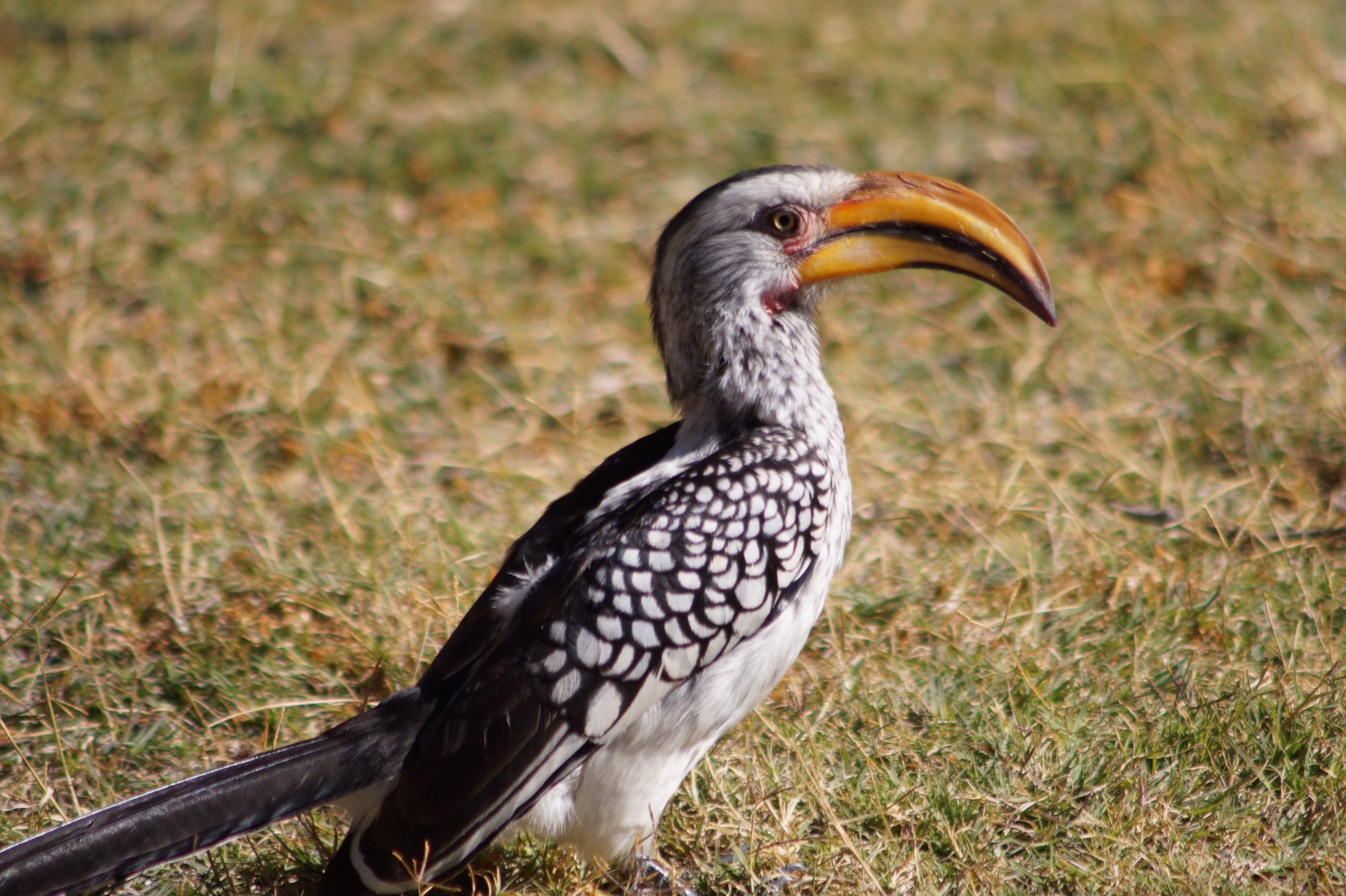

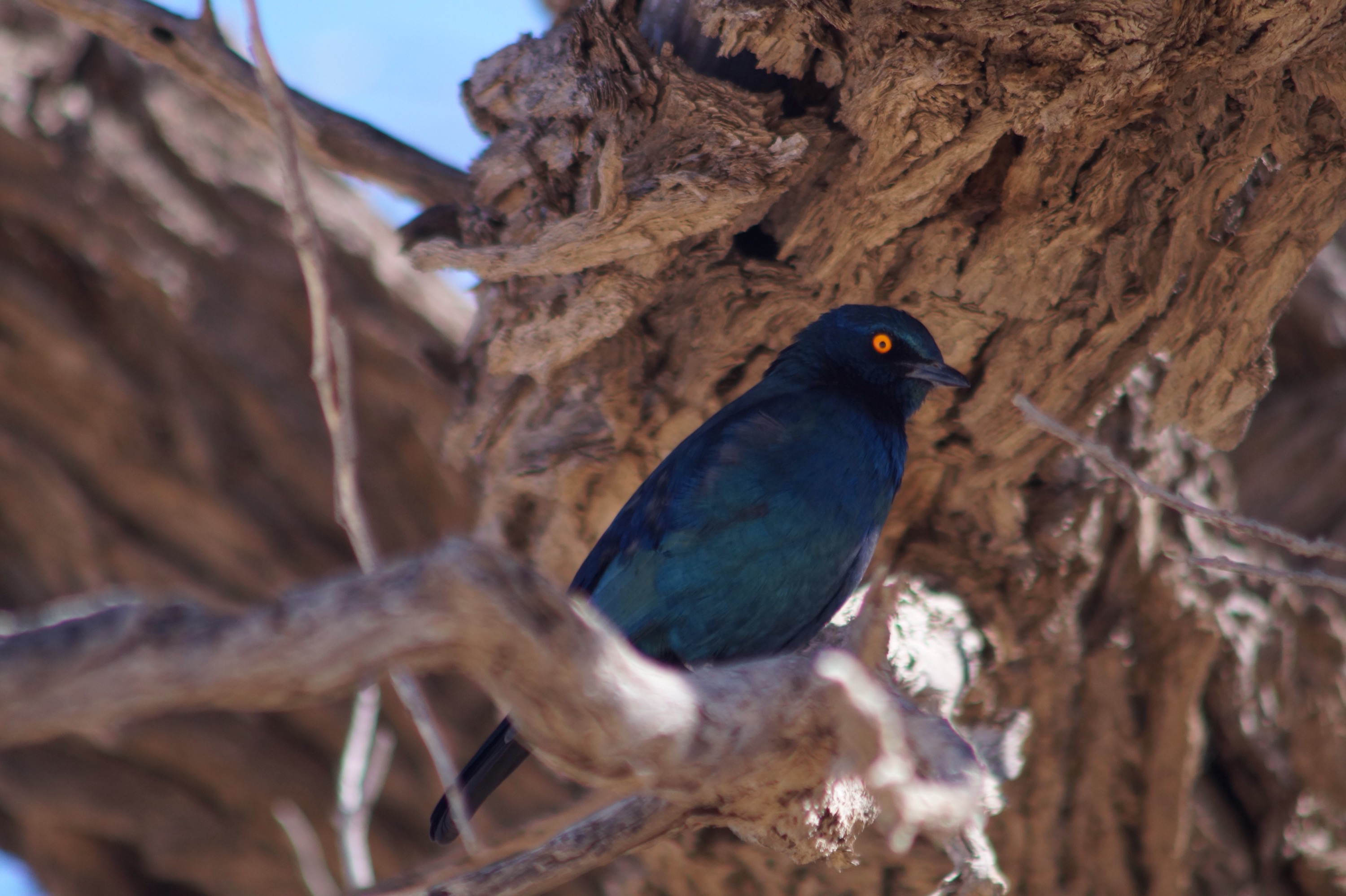
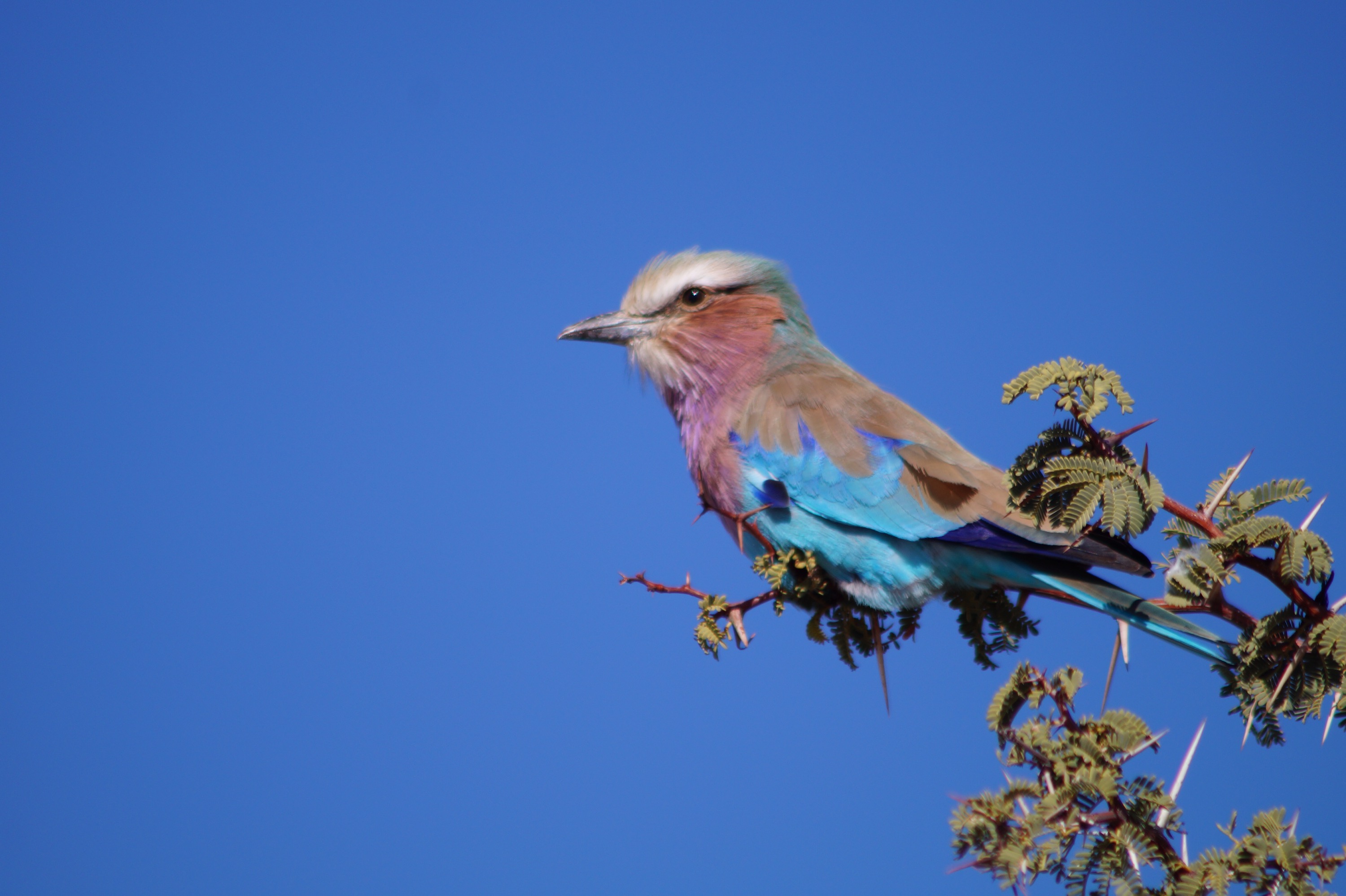
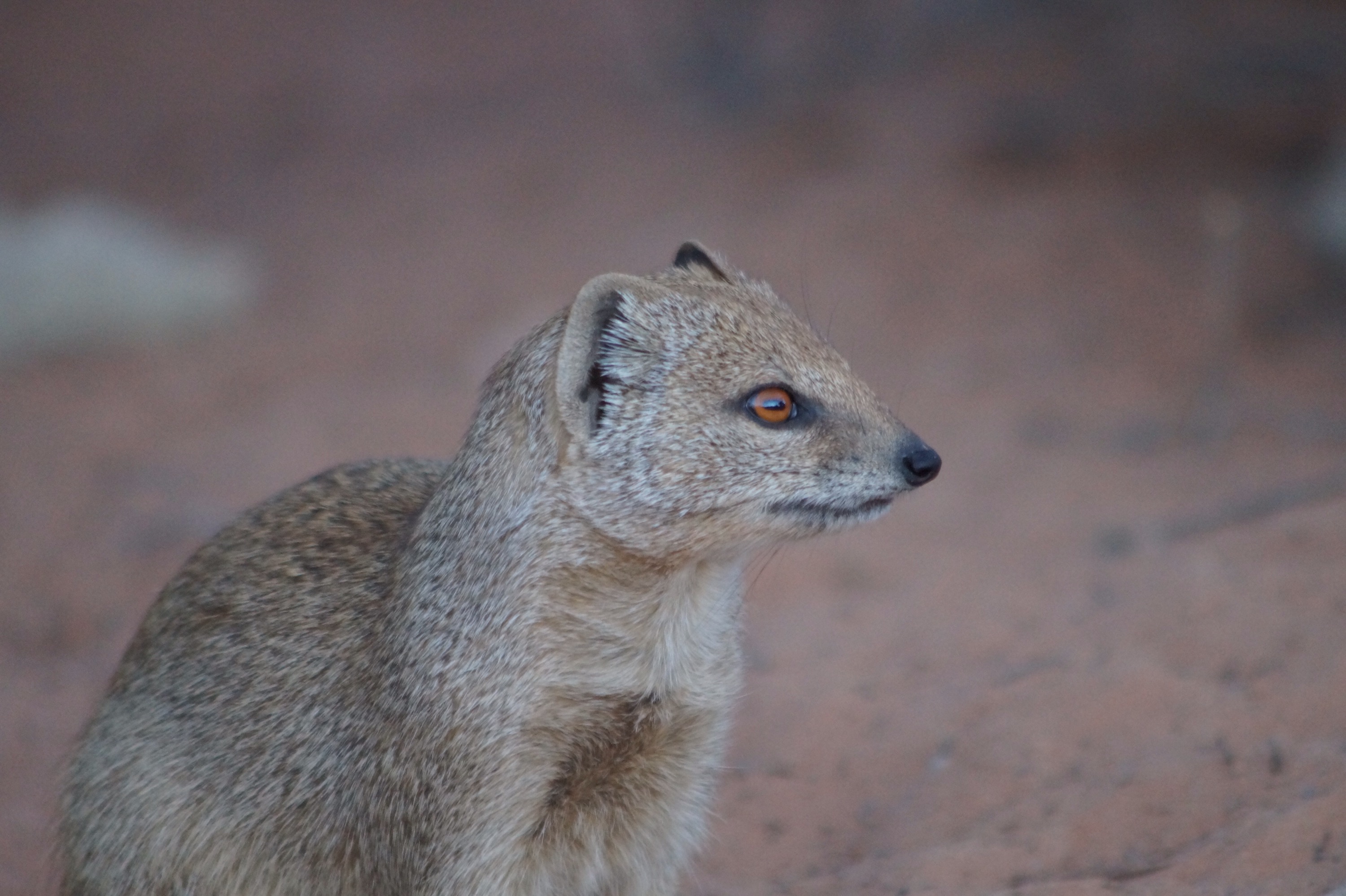
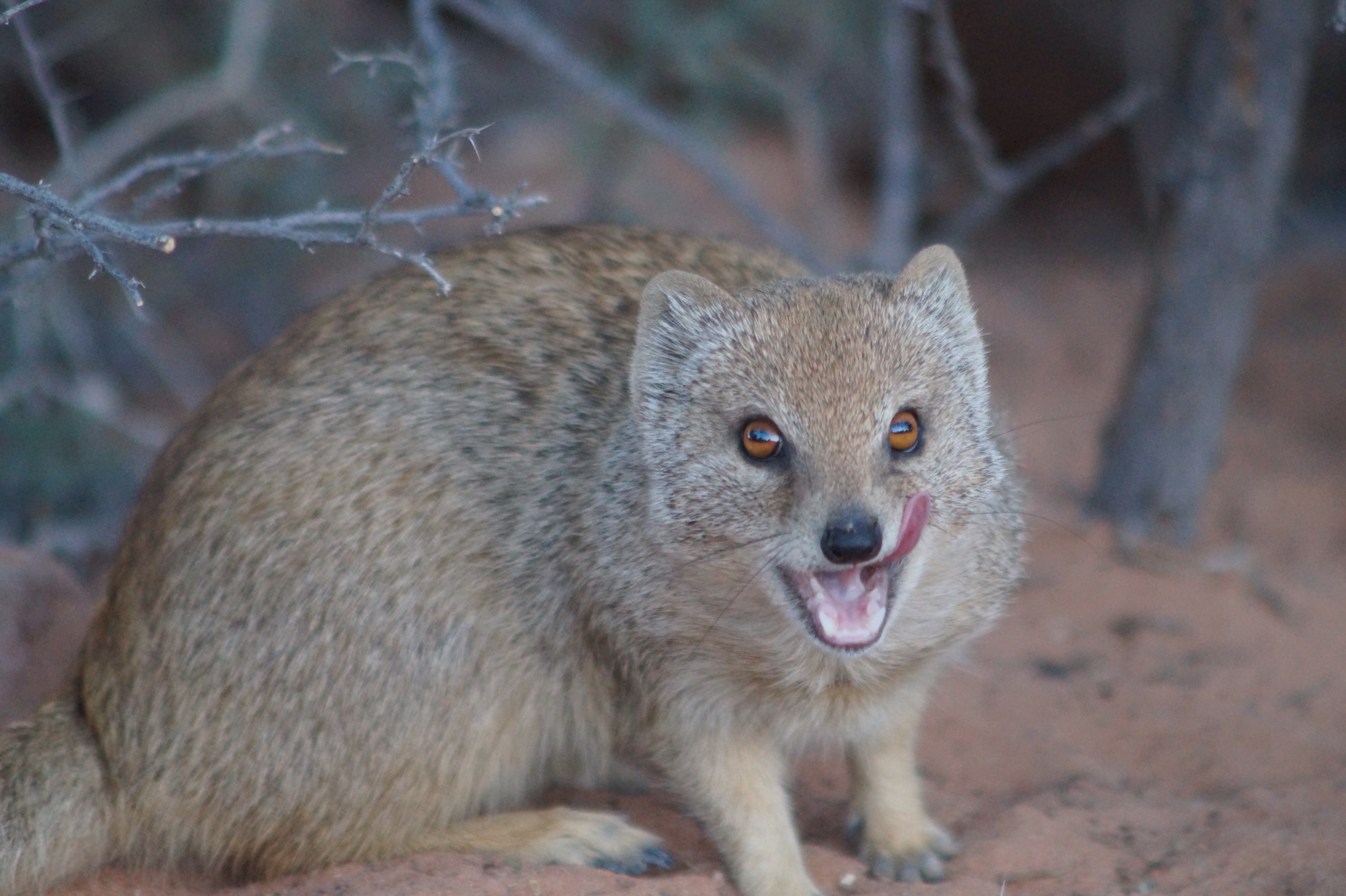

After a week we were very sad to leave, we all love wildlife so all the game viewing had been magnificent. But it was also the magic of the rolling red dunes, sense of space and the blinding blue endless skies above that captivated our hearts.
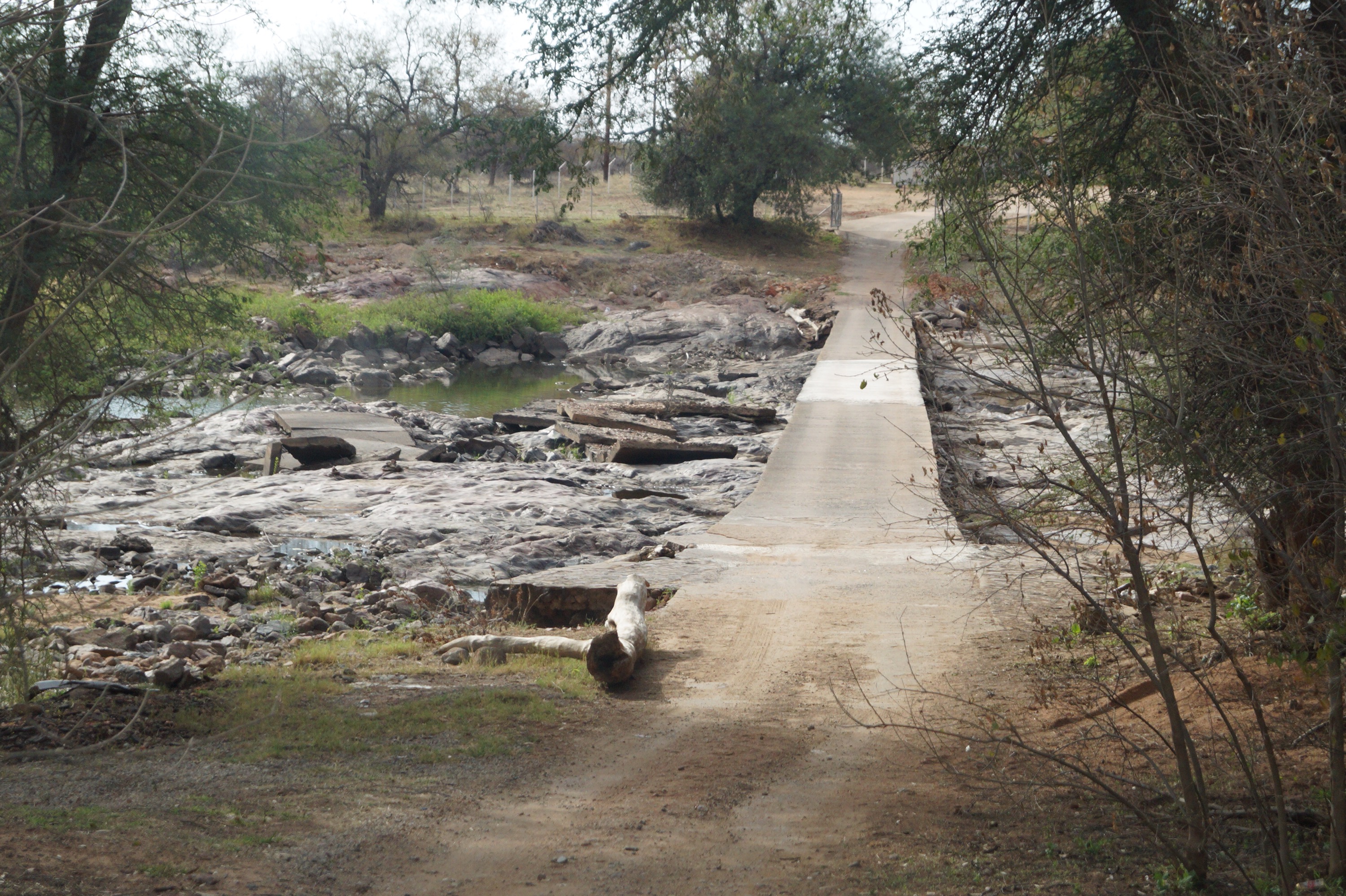 Why all this stress you might ask? Unfortunately for us South Africa changed its visa rules last year so if you are entering their country for a second time without returning to your home country first, you are only entitled to a 7 day visa. For 99% of travellers, especially if they are flying in, this isn't a problem. But we had heard other overland travellers whose whole journey had been dramatically altered because of it. Our Swiss biker friends, who are also in the same boat, had even been to the South African Embassy in Harare to ask about it and they had been told if they explained their situation they might be able to get longer but it was up to the border guards discretion. There is a big border crossing at Beitbridge between Zimbabwe and South Africa but as lots of trucks pass though, it is known as being stressful and very busy. We thought a quieter border would give us a better chance. Hence the detour to Botswana. There are several tiny border crossings across the Limpopo River either driving through the dry river bed or a concrete causeway. The added advantage for us is that is that if we were offered just 7 days we could turn around and re-enter Botswana, where as if we had crossed from Zimbabwe we would need another visa to get back in.
Leaving Bulawayo we headed west to the Botswana border, where we turned south to Francistown. That night the clouds and cold came in, we set off towards the wilderness area known as the Tuli Block. We spent a couple of nights on the banks of the Limpopo, with South Africa just across the other side. At this time of the year there was nothing in the sandy river bed apart from a couple of green pools, we were told they were full of crocs so didn't go too close. With no fences, we listened to the elephants crash around the bushes in the dark just beyond where we could see with our torches.
Why all this stress you might ask? Unfortunately for us South Africa changed its visa rules last year so if you are entering their country for a second time without returning to your home country first, you are only entitled to a 7 day visa. For 99% of travellers, especially if they are flying in, this isn't a problem. But we had heard other overland travellers whose whole journey had been dramatically altered because of it. Our Swiss biker friends, who are also in the same boat, had even been to the South African Embassy in Harare to ask about it and they had been told if they explained their situation they might be able to get longer but it was up to the border guards discretion. There is a big border crossing at Beitbridge between Zimbabwe and South Africa but as lots of trucks pass though, it is known as being stressful and very busy. We thought a quieter border would give us a better chance. Hence the detour to Botswana. There are several tiny border crossings across the Limpopo River either driving through the dry river bed or a concrete causeway. The added advantage for us is that is that if we were offered just 7 days we could turn around and re-enter Botswana, where as if we had crossed from Zimbabwe we would need another visa to get back in.
Leaving Bulawayo we headed west to the Botswana border, where we turned south to Francistown. That night the clouds and cold came in, we set off towards the wilderness area known as the Tuli Block. We spent a couple of nights on the banks of the Limpopo, with South Africa just across the other side. At this time of the year there was nothing in the sandy river bed apart from a couple of green pools, we were told they were full of crocs so didn't go too close. With no fences, we listened to the elephants crash around the bushes in the dark just beyond where we could see with our torches.
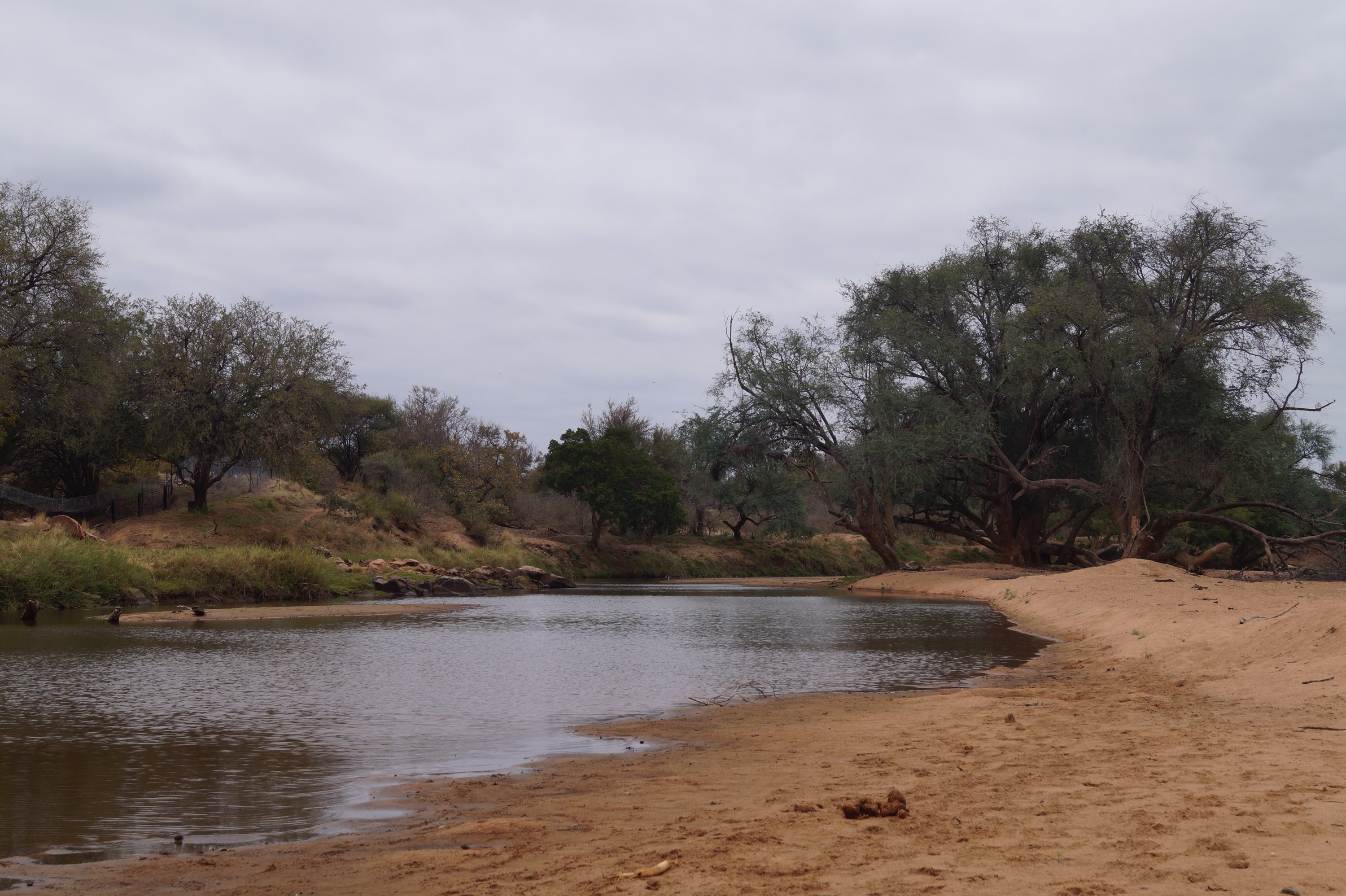 After our successful crossing we spent a couple of nights on the other side of the Limpopo in Mapungubwe National Park. Impressive remains from the Iron Age have been discovered in the park. The museum explaining their huge cultural significance of such a find, is made of beautiful domes made of compressed mud. The structure is hugely impressive, as is the golden rhino they dug up. In addition there is a lovely drive that culminates in an overlook of the confluence of two rivers. Here South Africa, Zimbabwe and Botswana all meet at a point.
After our successful crossing we spent a couple of nights on the other side of the Limpopo in Mapungubwe National Park. Impressive remains from the Iron Age have been discovered in the park. The museum explaining their huge cultural significance of such a find, is made of beautiful domes made of compressed mud. The structure is hugely impressive, as is the golden rhino they dug up. In addition there is a lovely drive that culminates in an overlook of the confluence of two rivers. Here South Africa, Zimbabwe and Botswana all meet at a point.
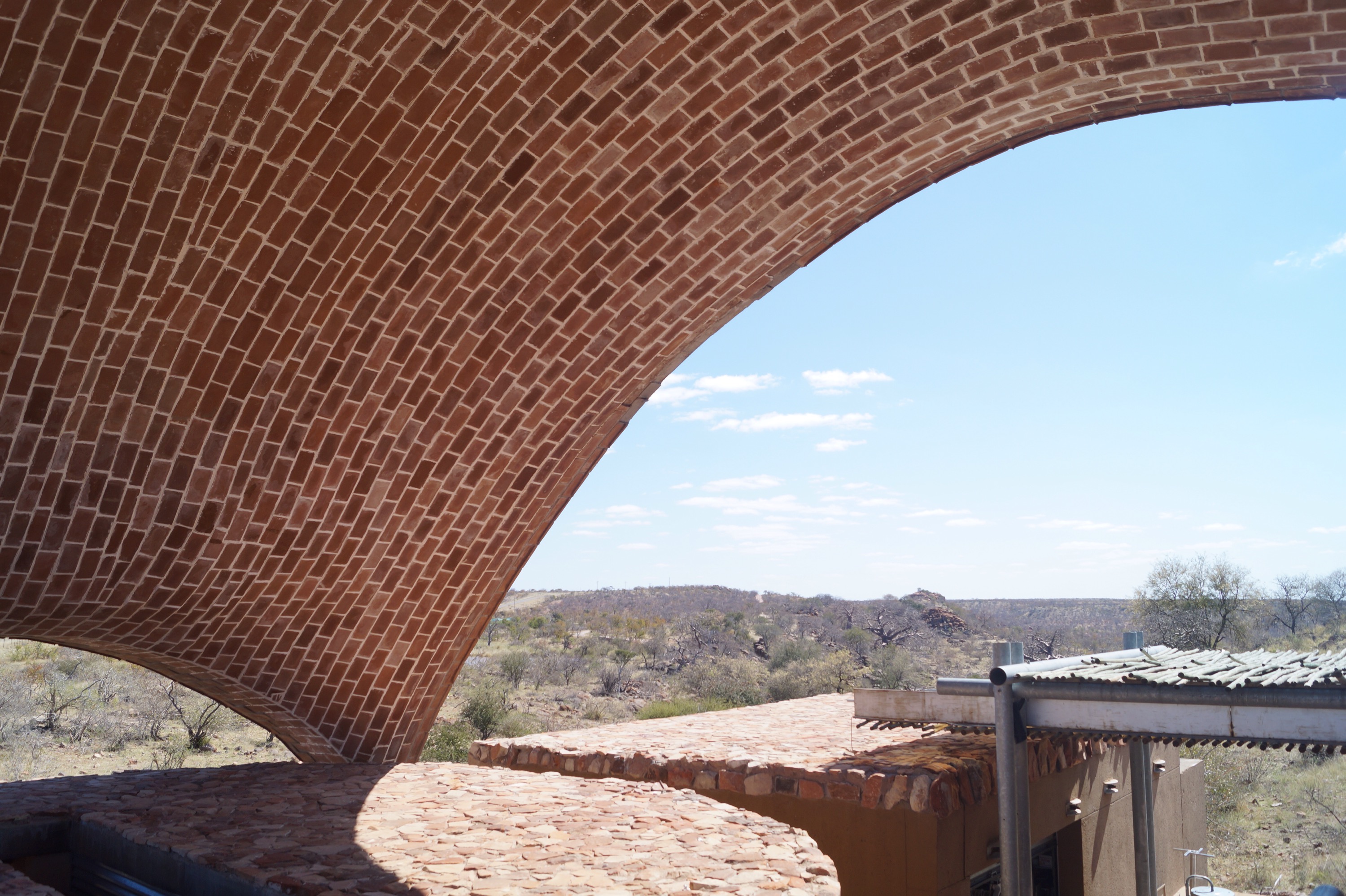
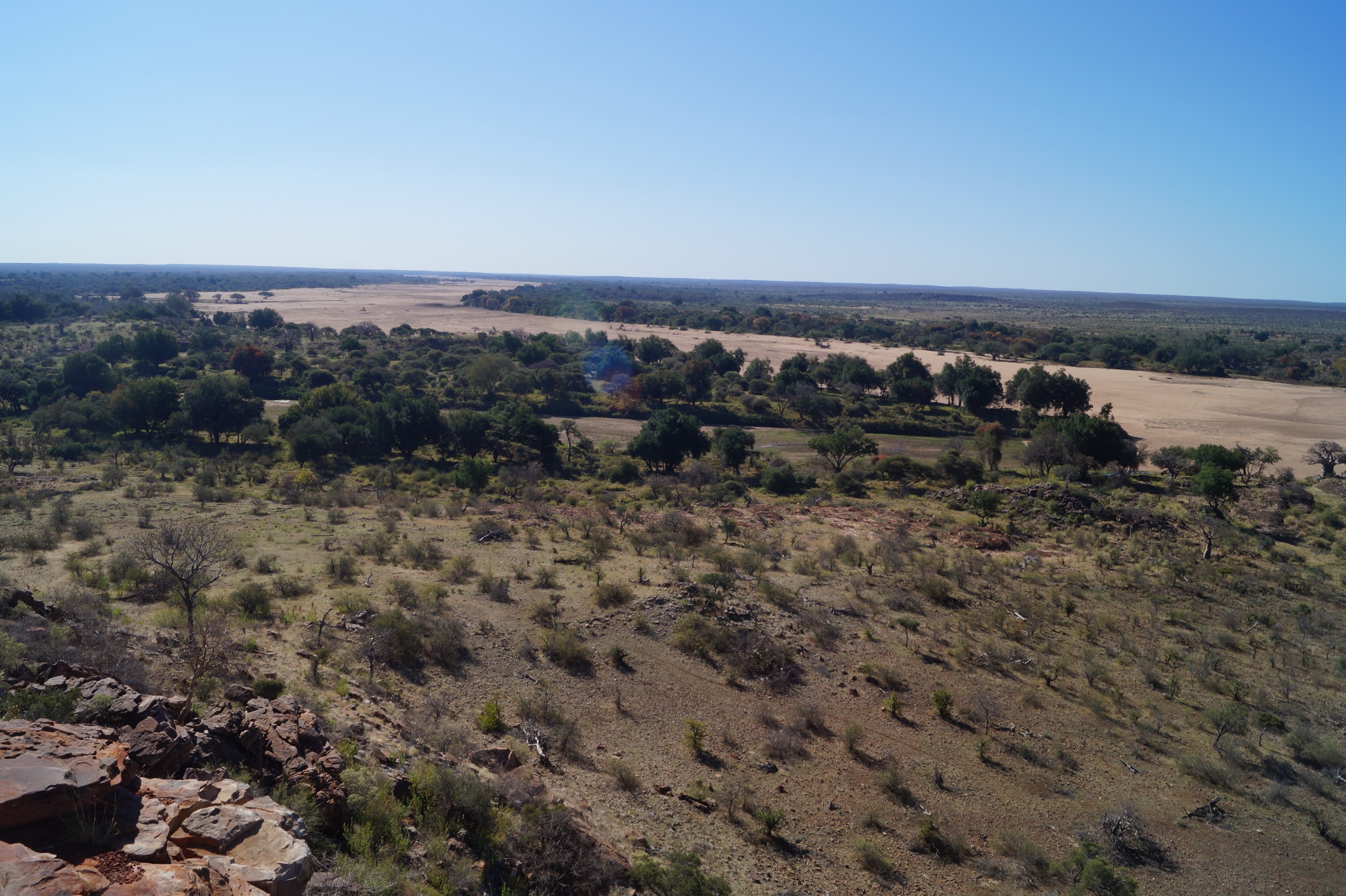

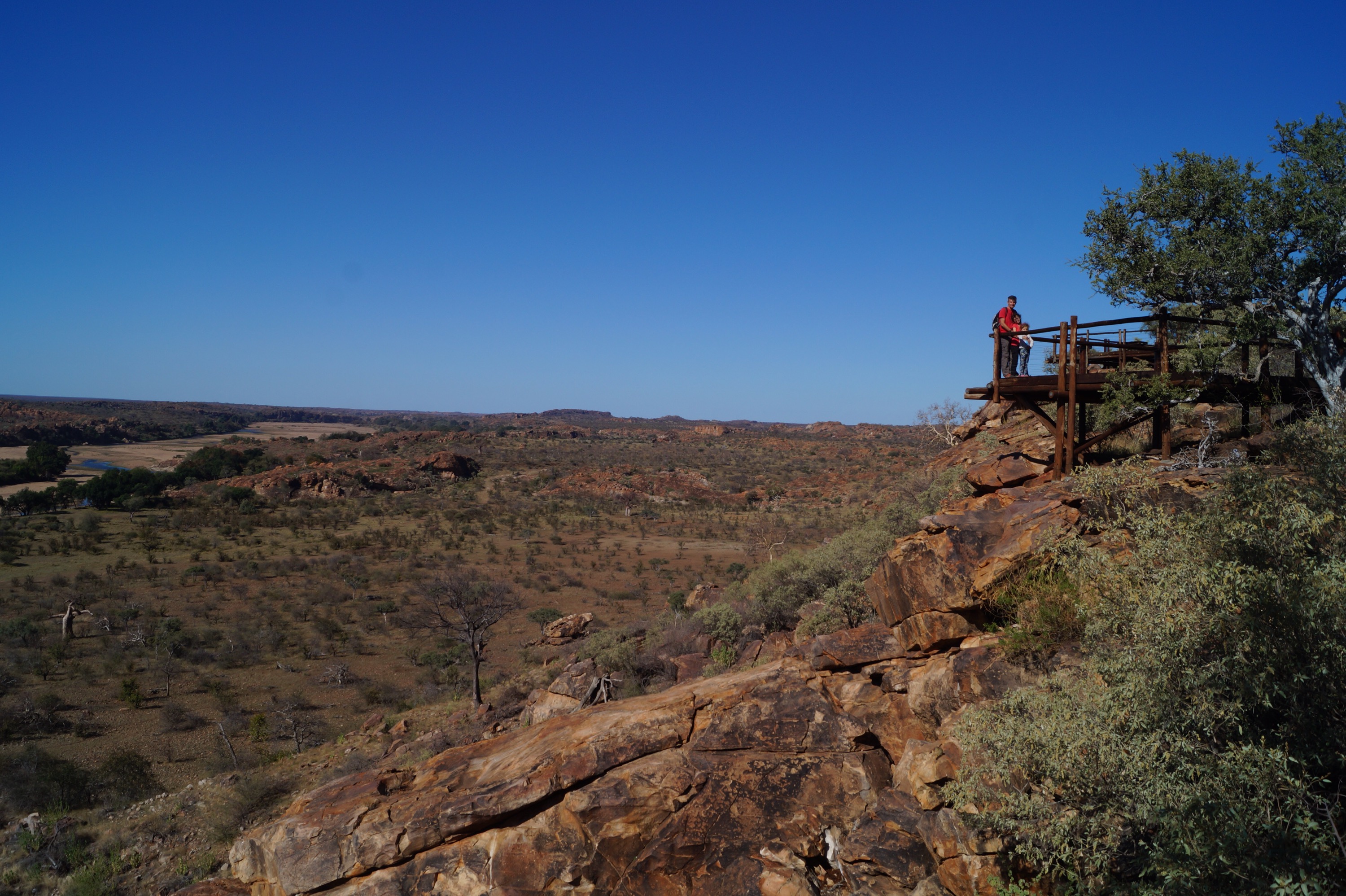

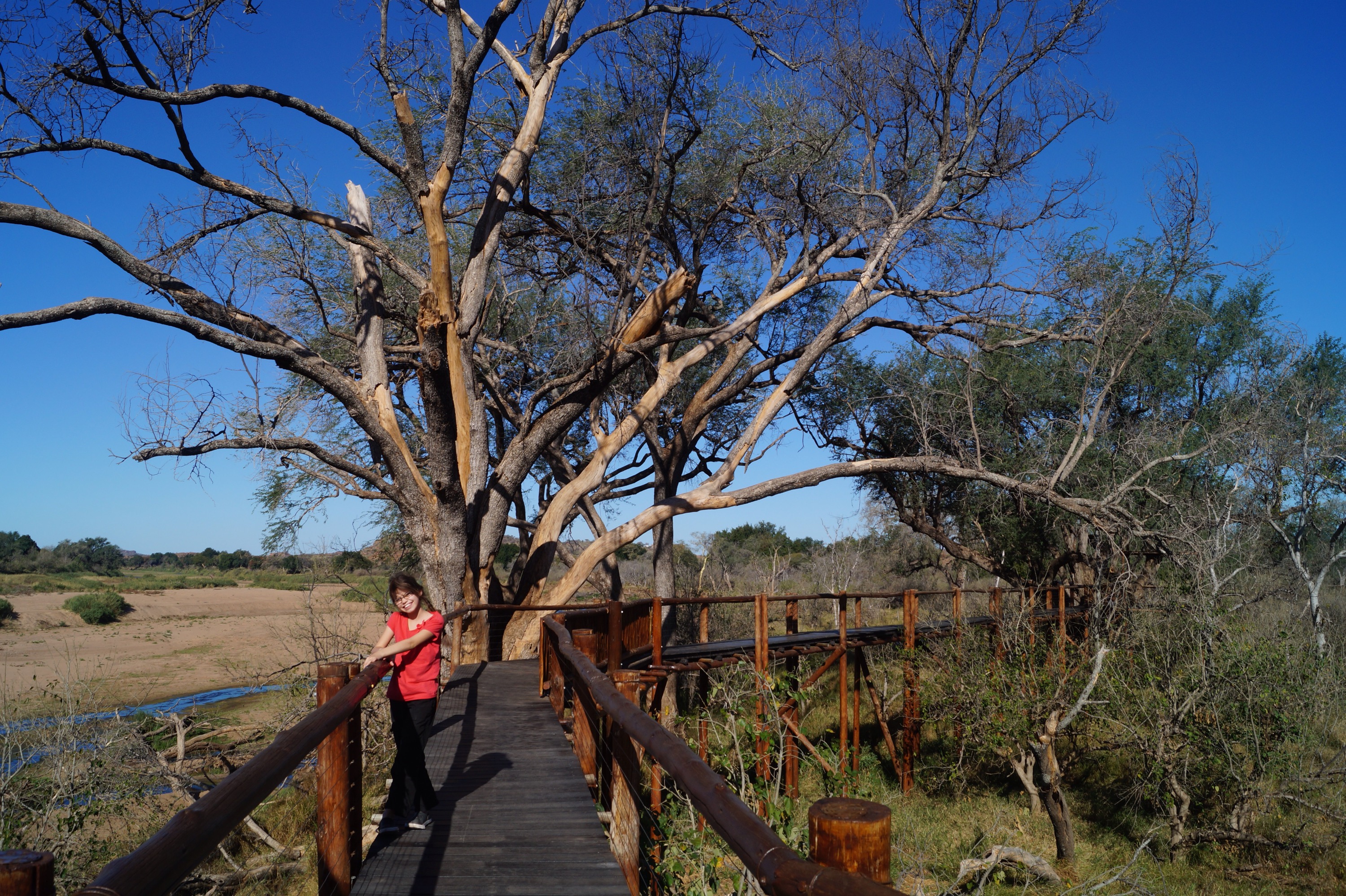 The campsite is on the western unconnected side of the park. We had to drive through huge orange and tomato farms to get in. I can only imagine the problems they have with elephants with such tasty foods just outside the park. This side has far fewer roads but the campsite was lovely. After squeezing under some trees to get in we decided to save our game driving till our time in the Kruger in a couple of days. We had plenty of game in the unfenced camp anyway, we all fell in love with the doe-eyed bushbuck pair who were completely unafraid of us.
The campsite is on the western unconnected side of the park. We had to drive through huge orange and tomato farms to get in. I can only imagine the problems they have with elephants with such tasty foods just outside the park. This side has far fewer roads but the campsite was lovely. After squeezing under some trees to get in we decided to save our game driving till our time in the Kruger in a couple of days. We had plenty of game in the unfenced camp anyway, we all fell in love with the doe-eyed bushbuck pair who were completely unafraid of us.
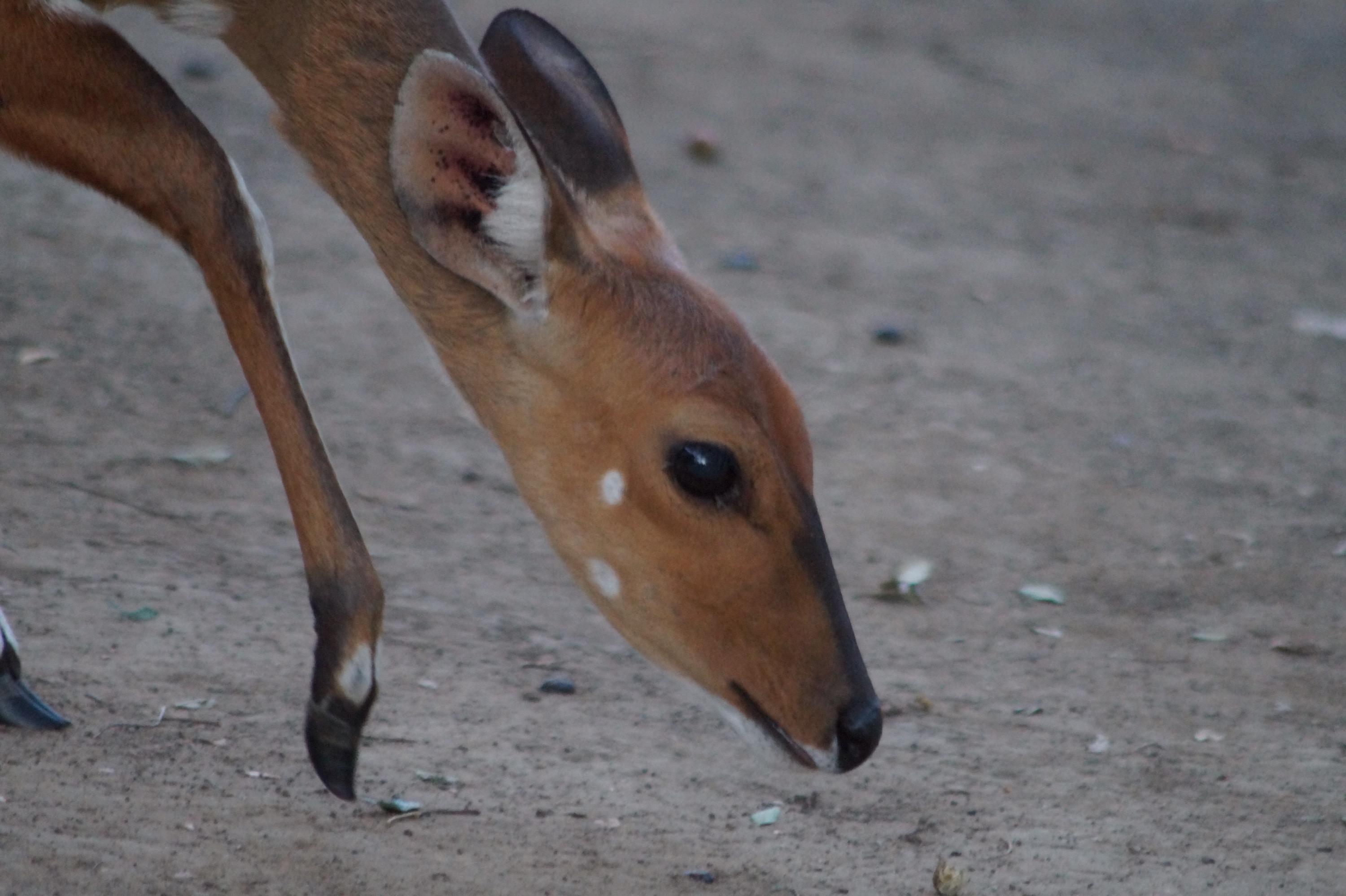

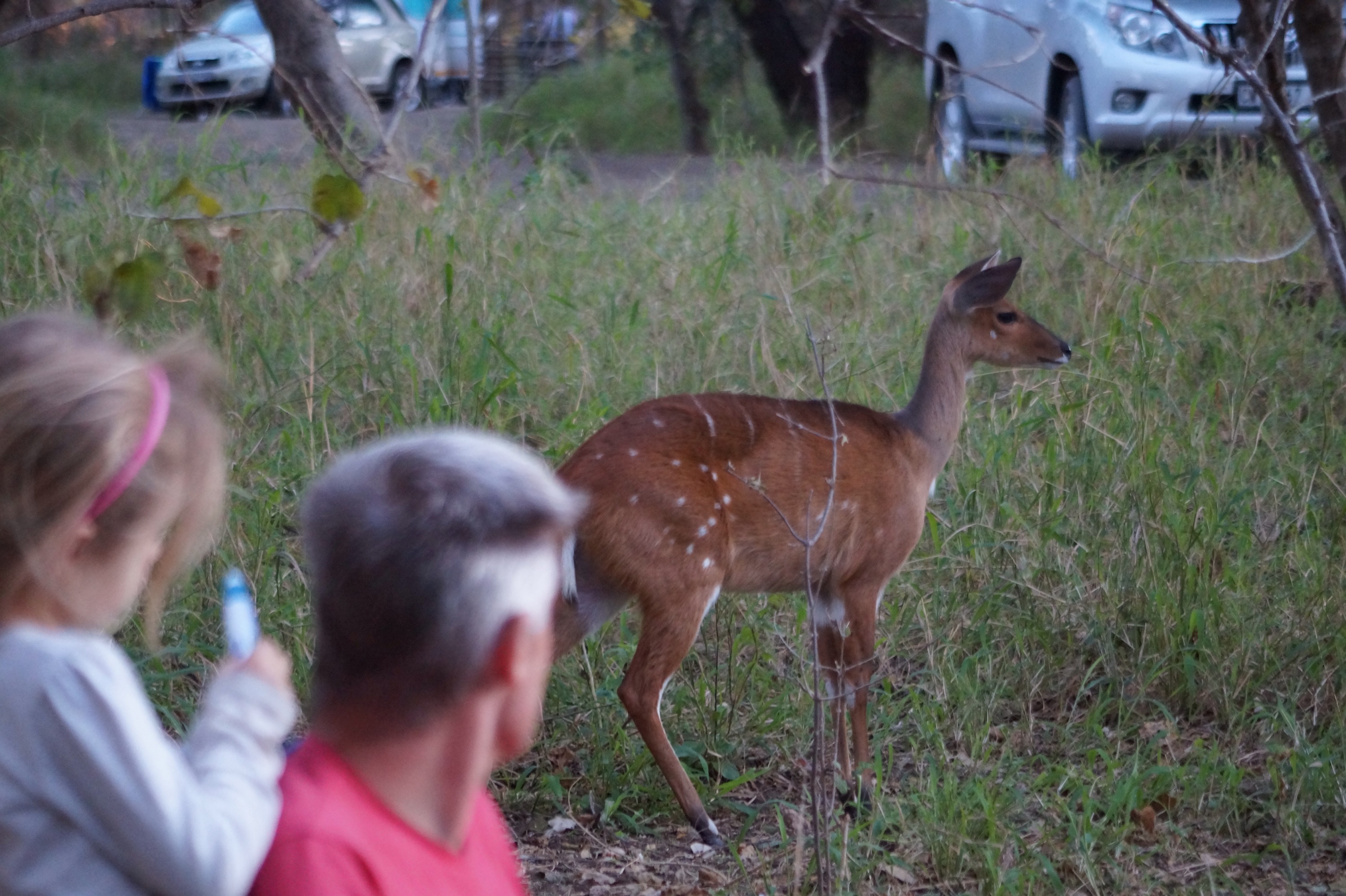 Our friendly South African campsite neighbours were kind enough to show us some of the best of what their country has to offer for supper that night. With delightful company round a proper South African-sized fire, they fed us delicious prawns and sent us away with homemade jams and fruit.
Our friendly South African campsite neighbours were kind enough to show us some of the best of what their country has to offer for supper that night. With delightful company round a proper South African-sized fire, they fed us delicious prawns and sent us away with homemade jams and fruit.
































